

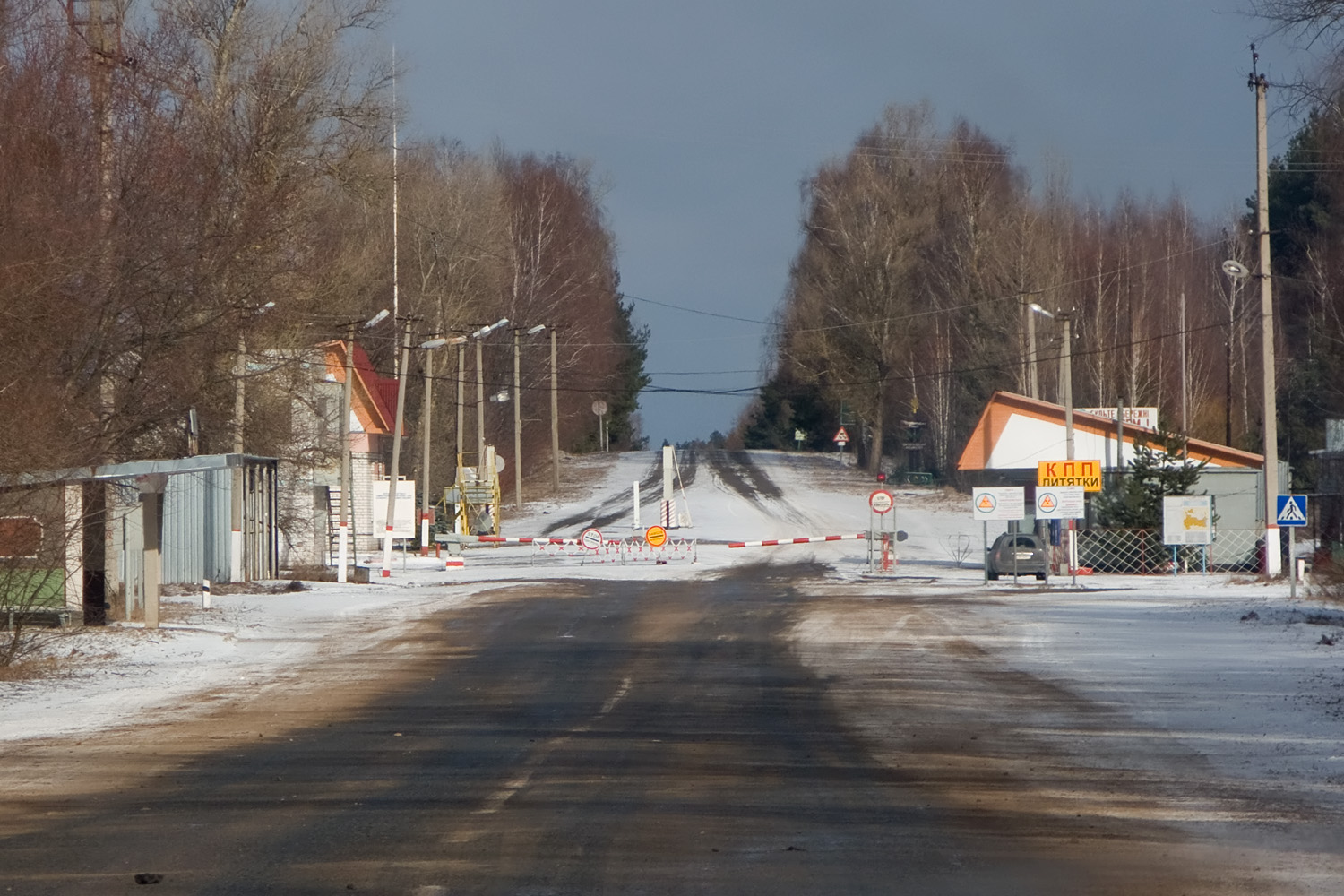

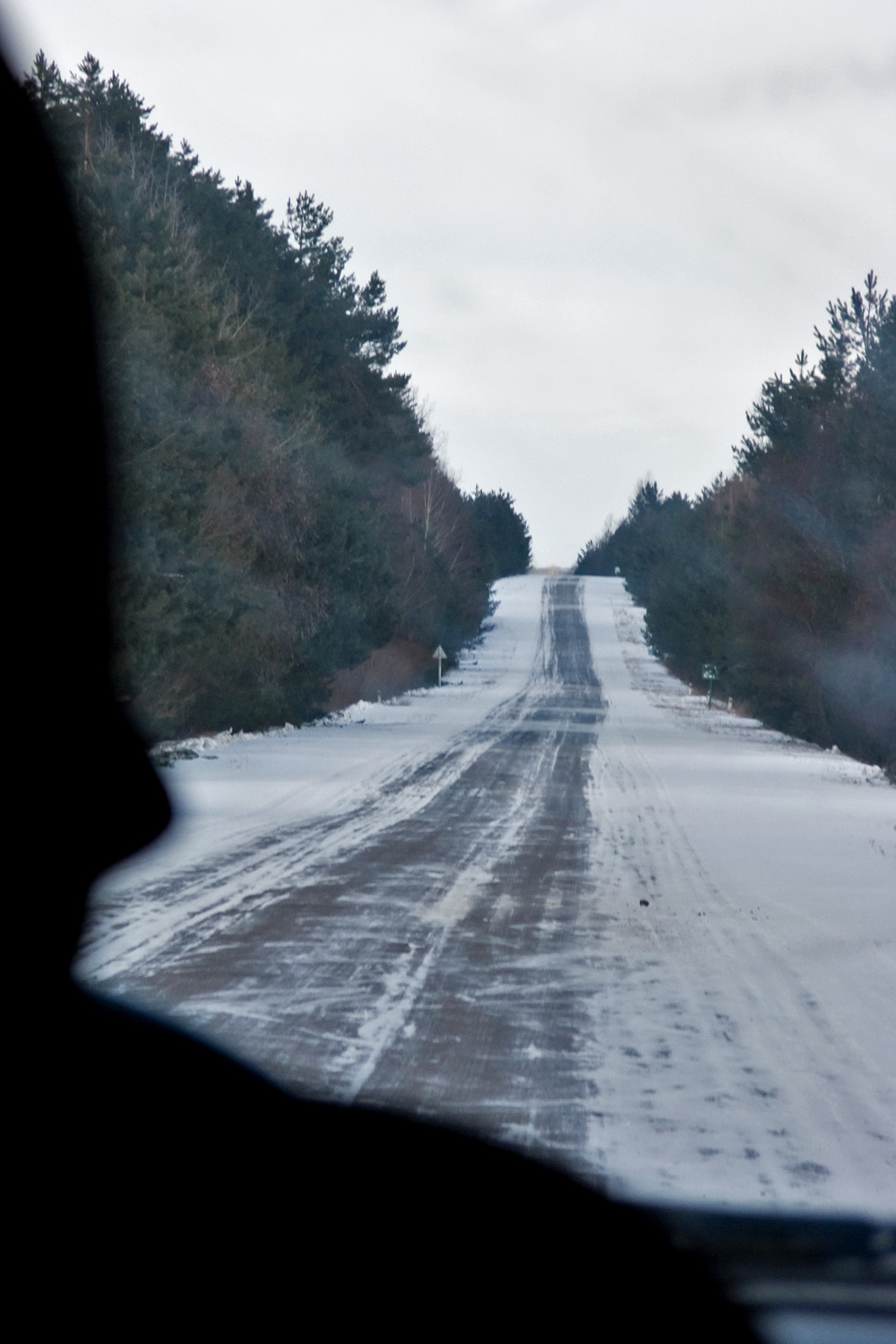


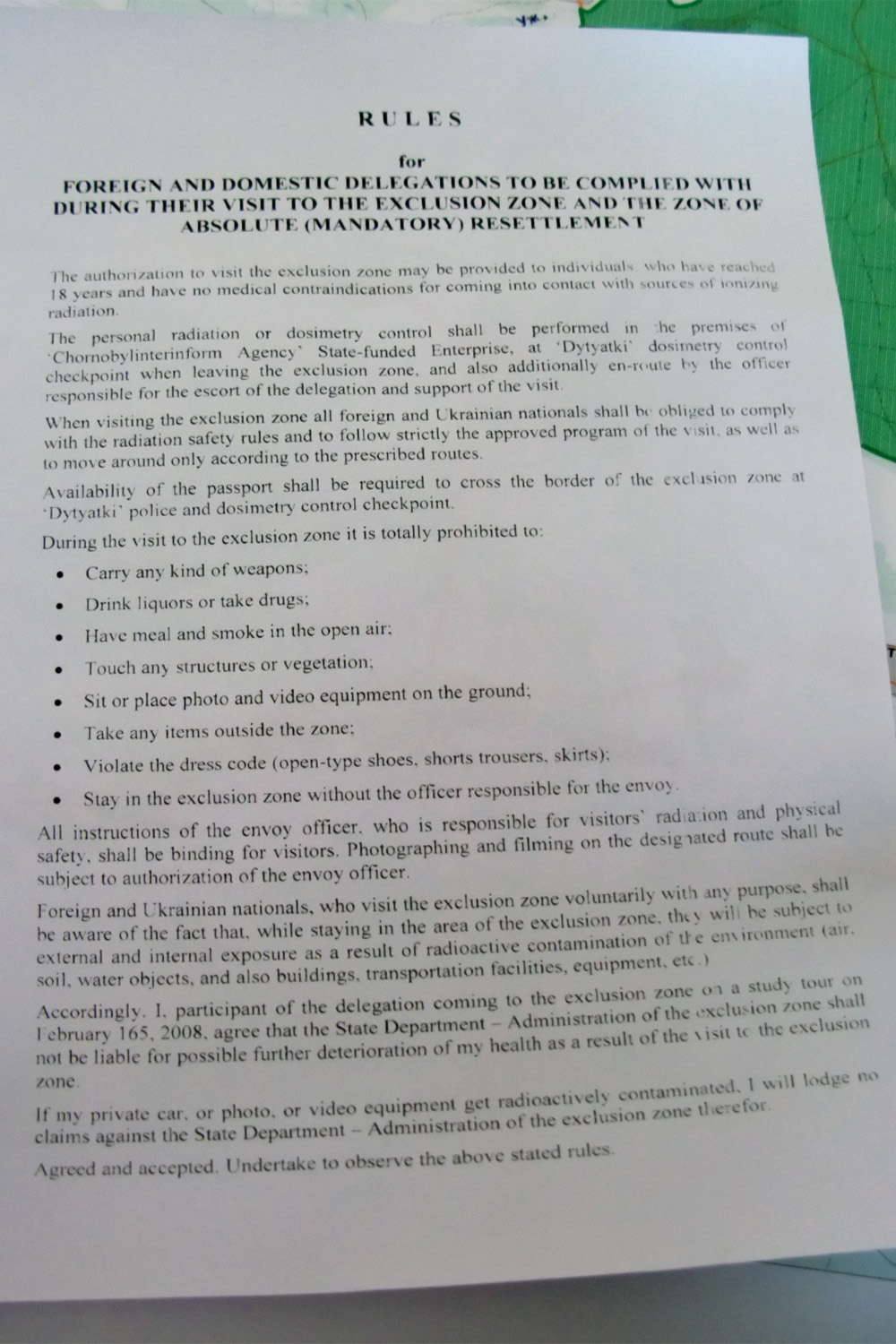


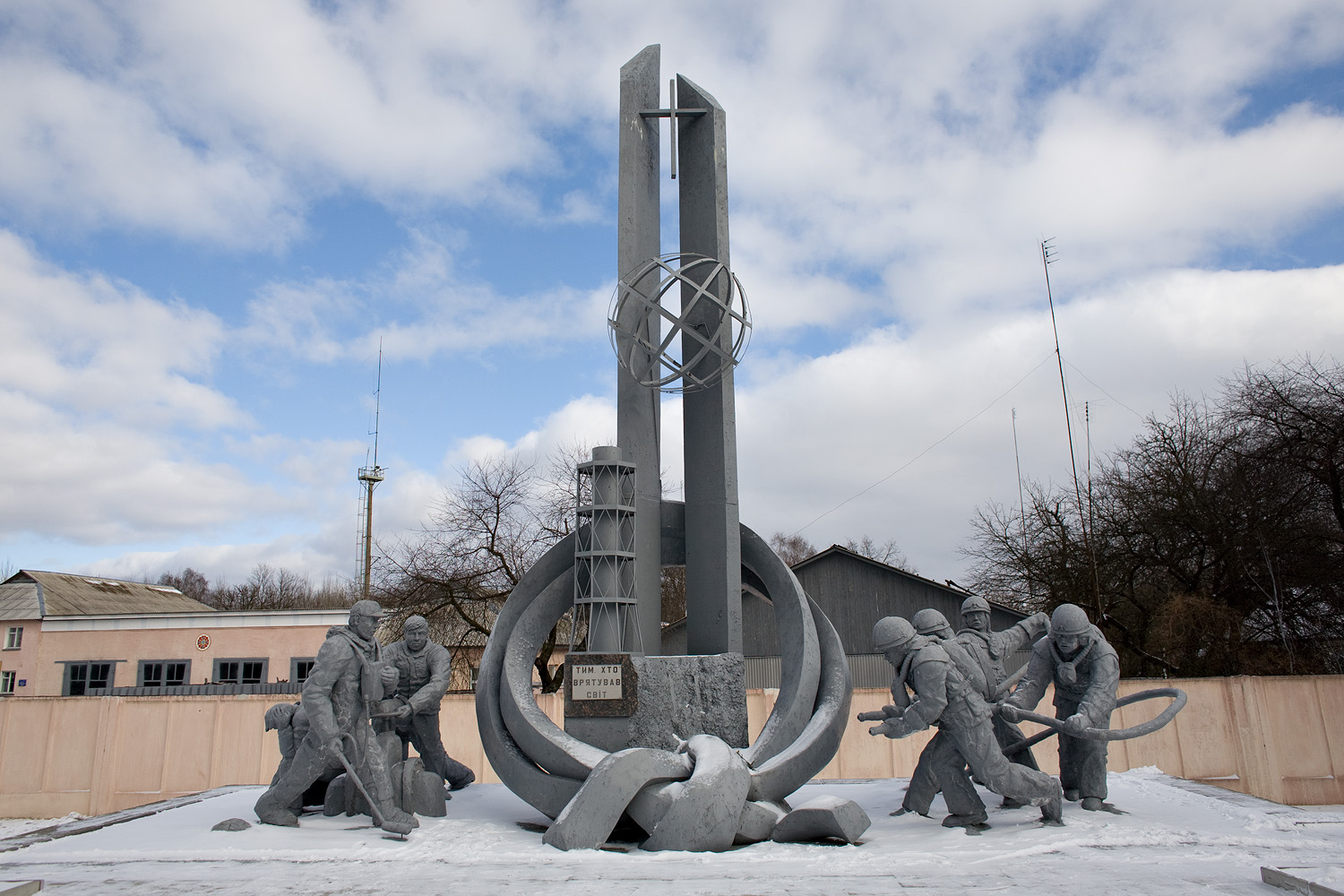
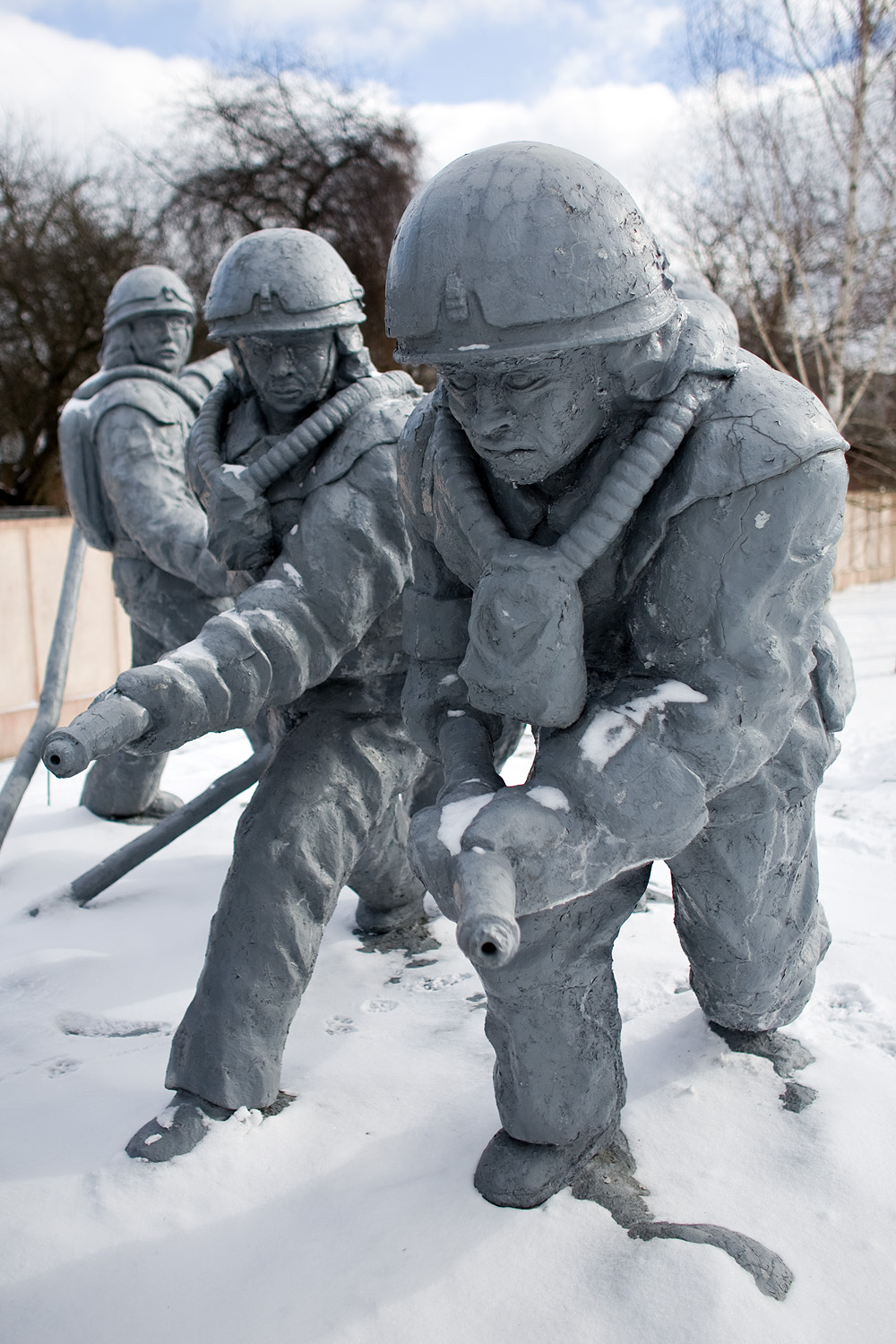








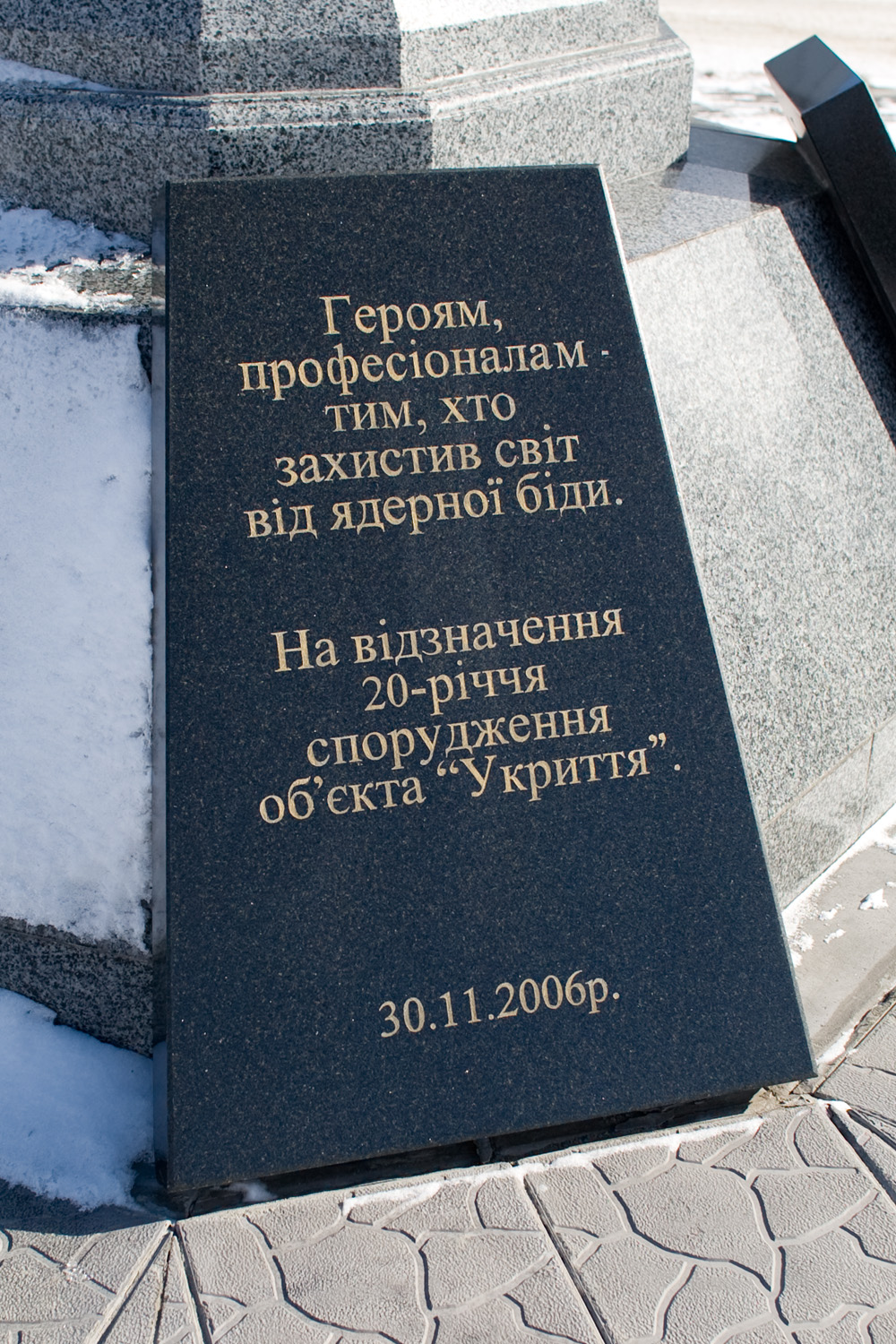


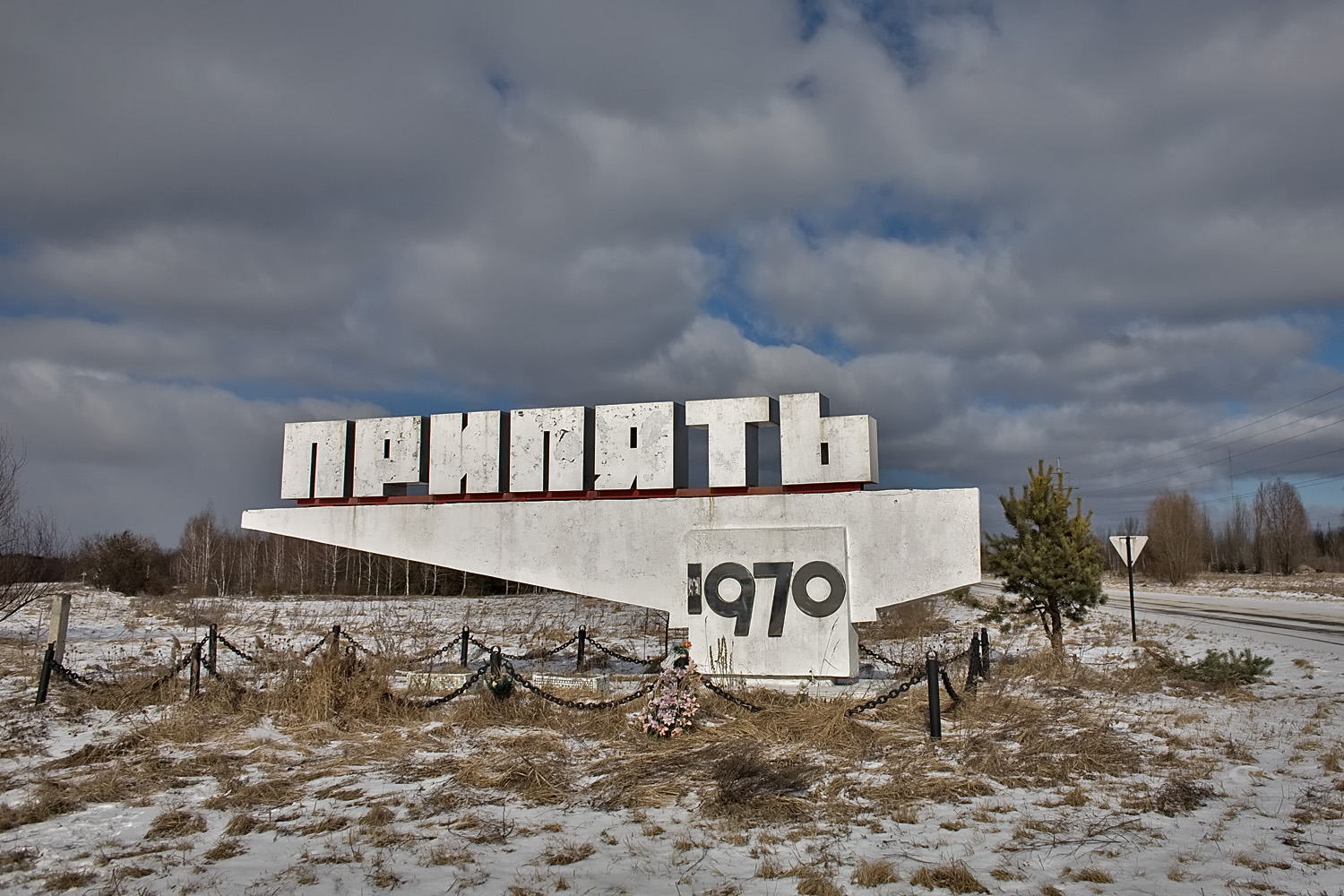


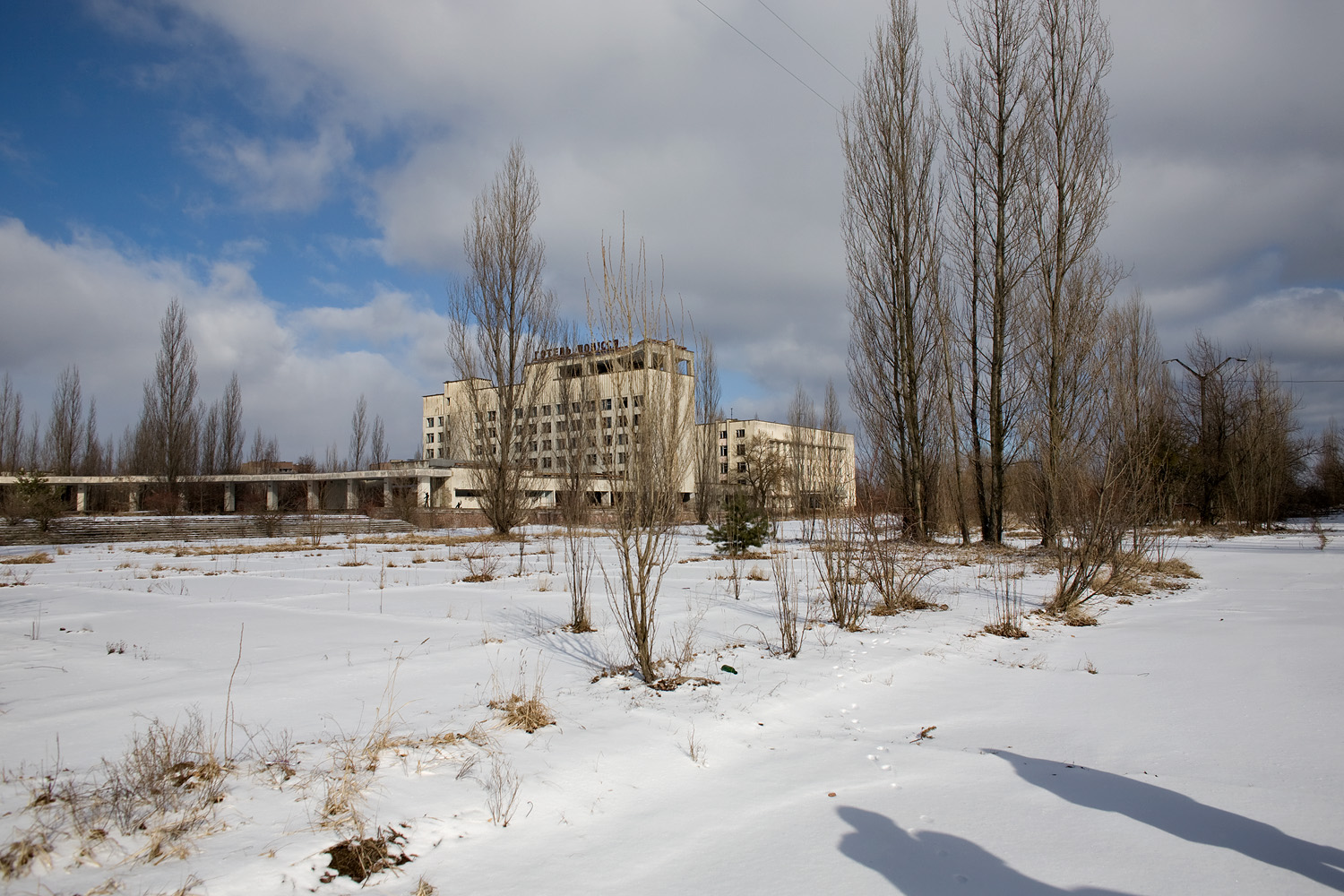
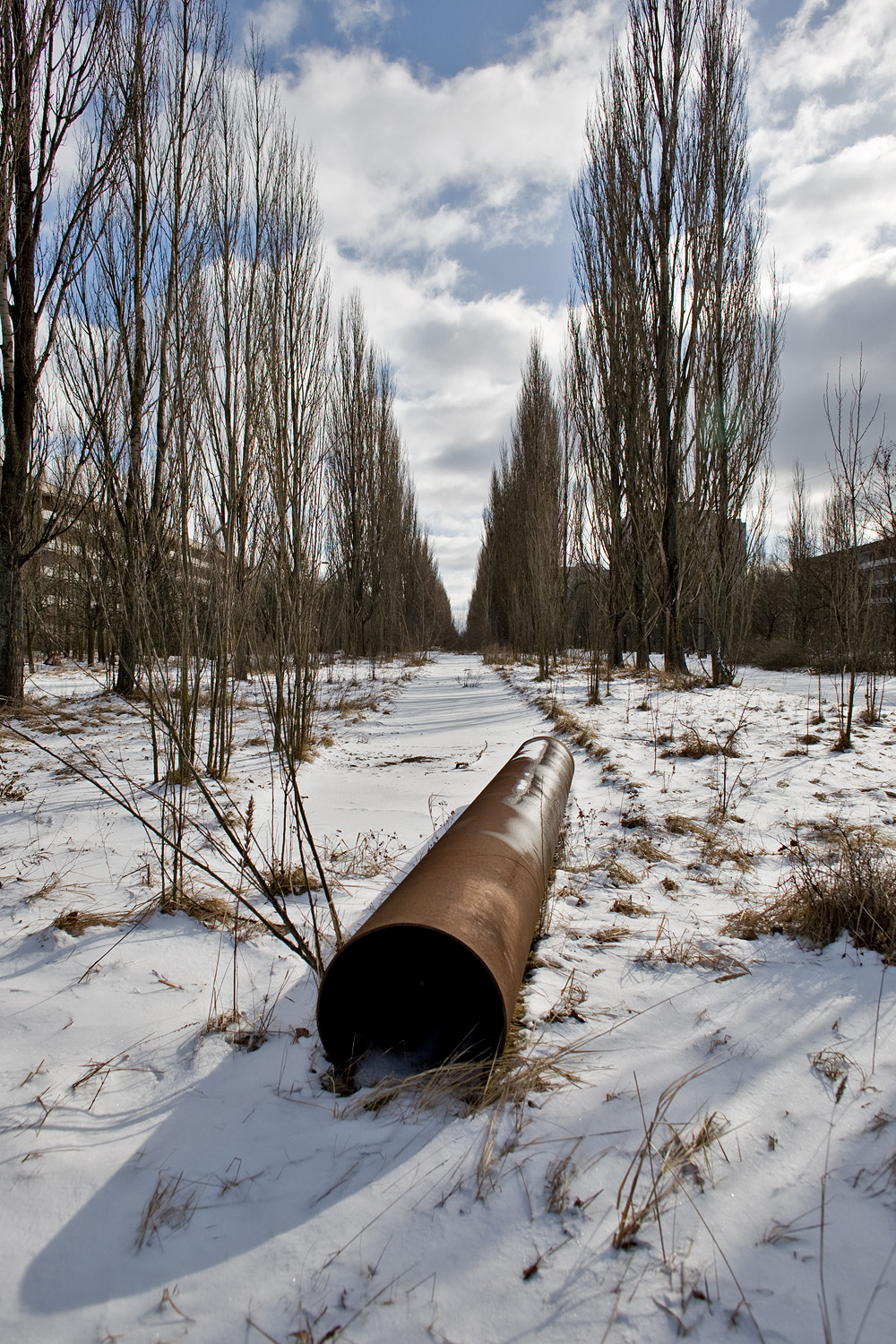


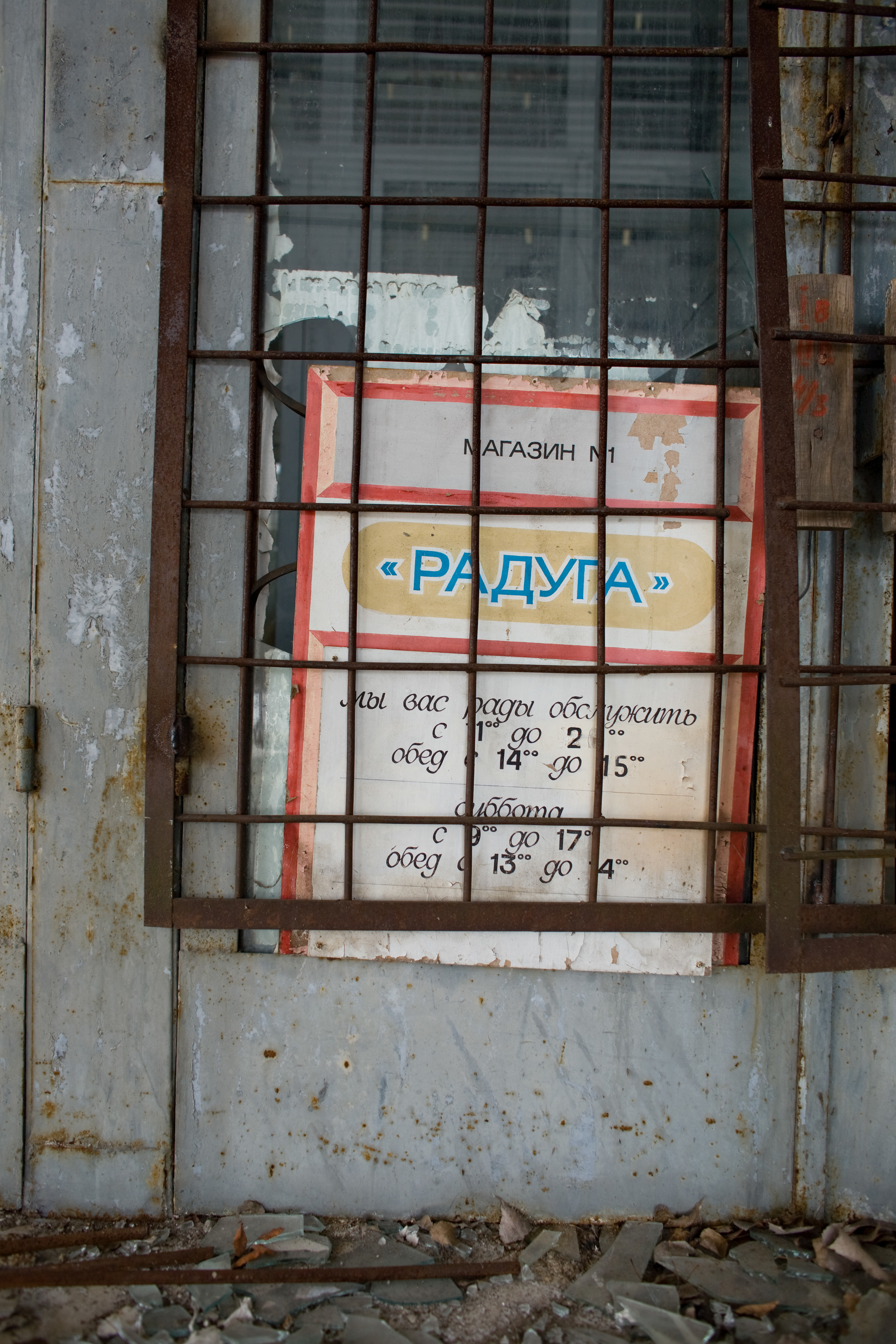
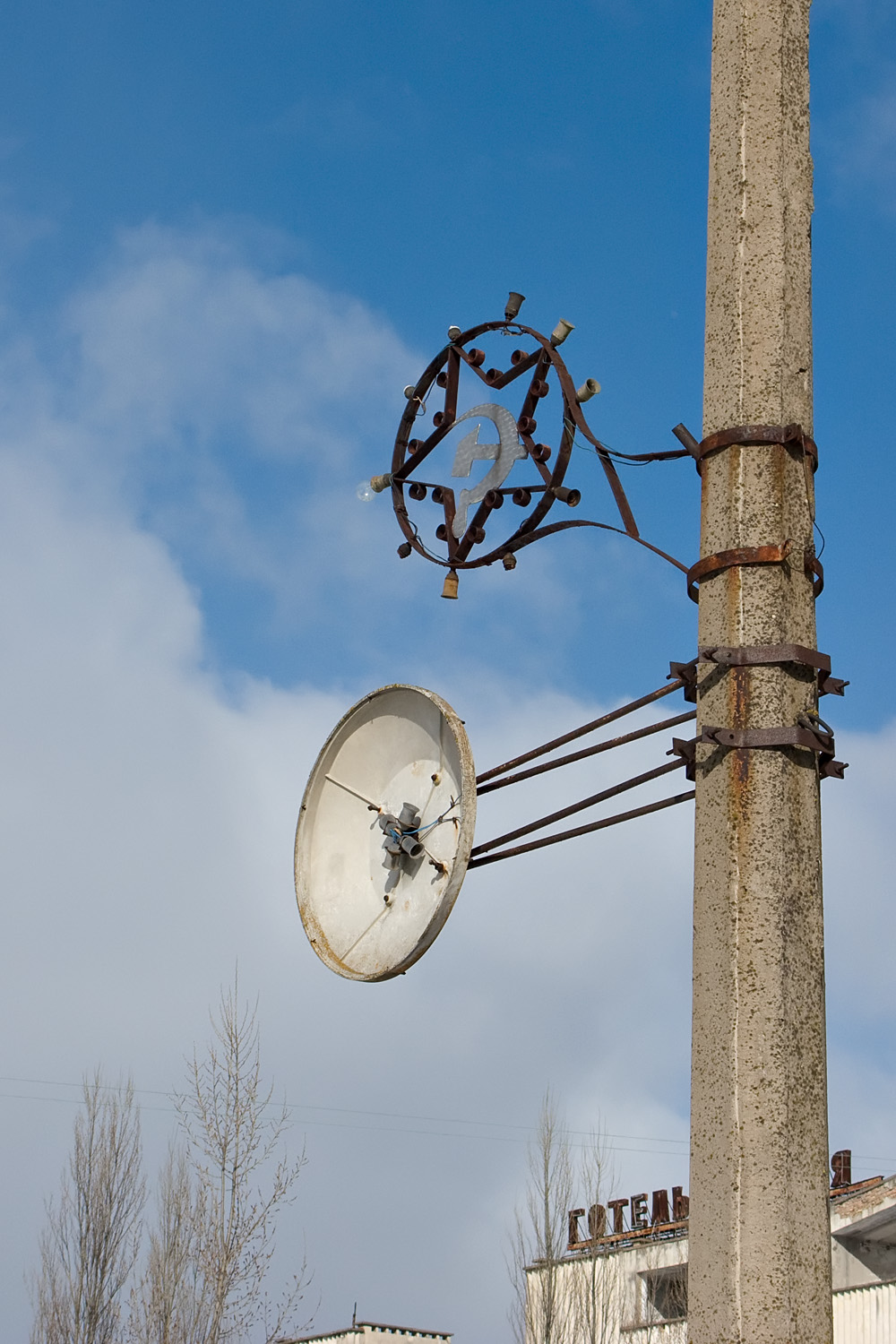
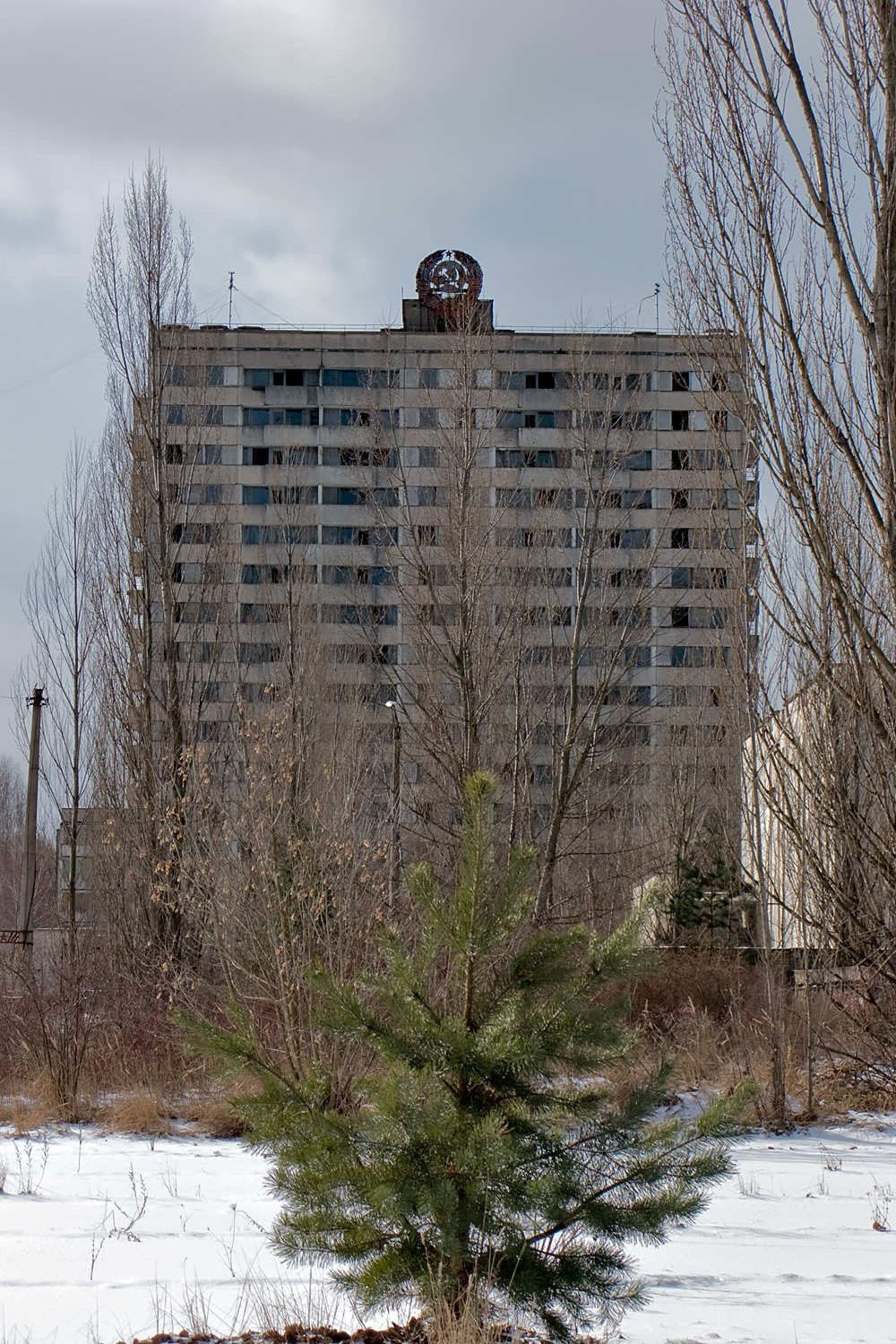






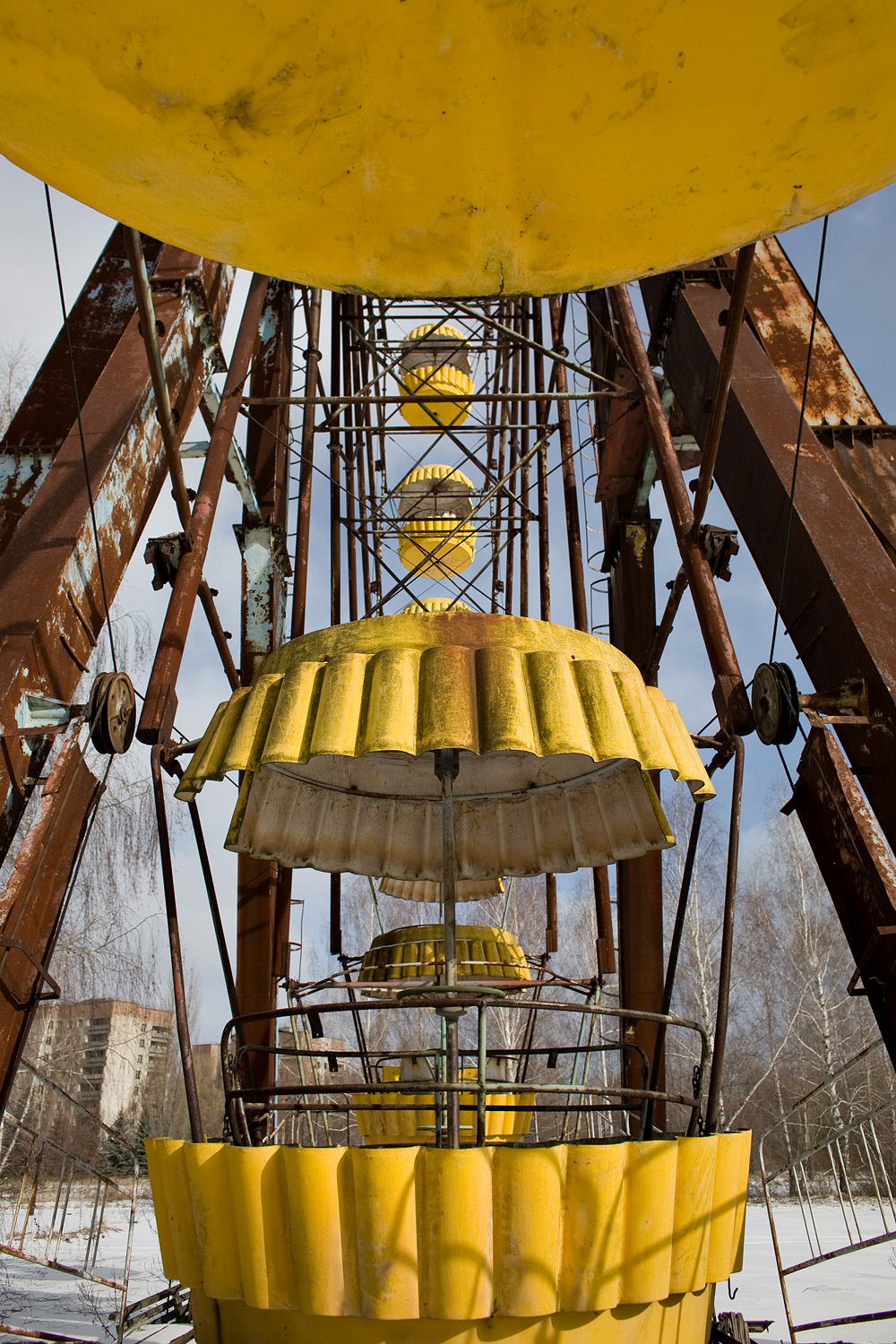

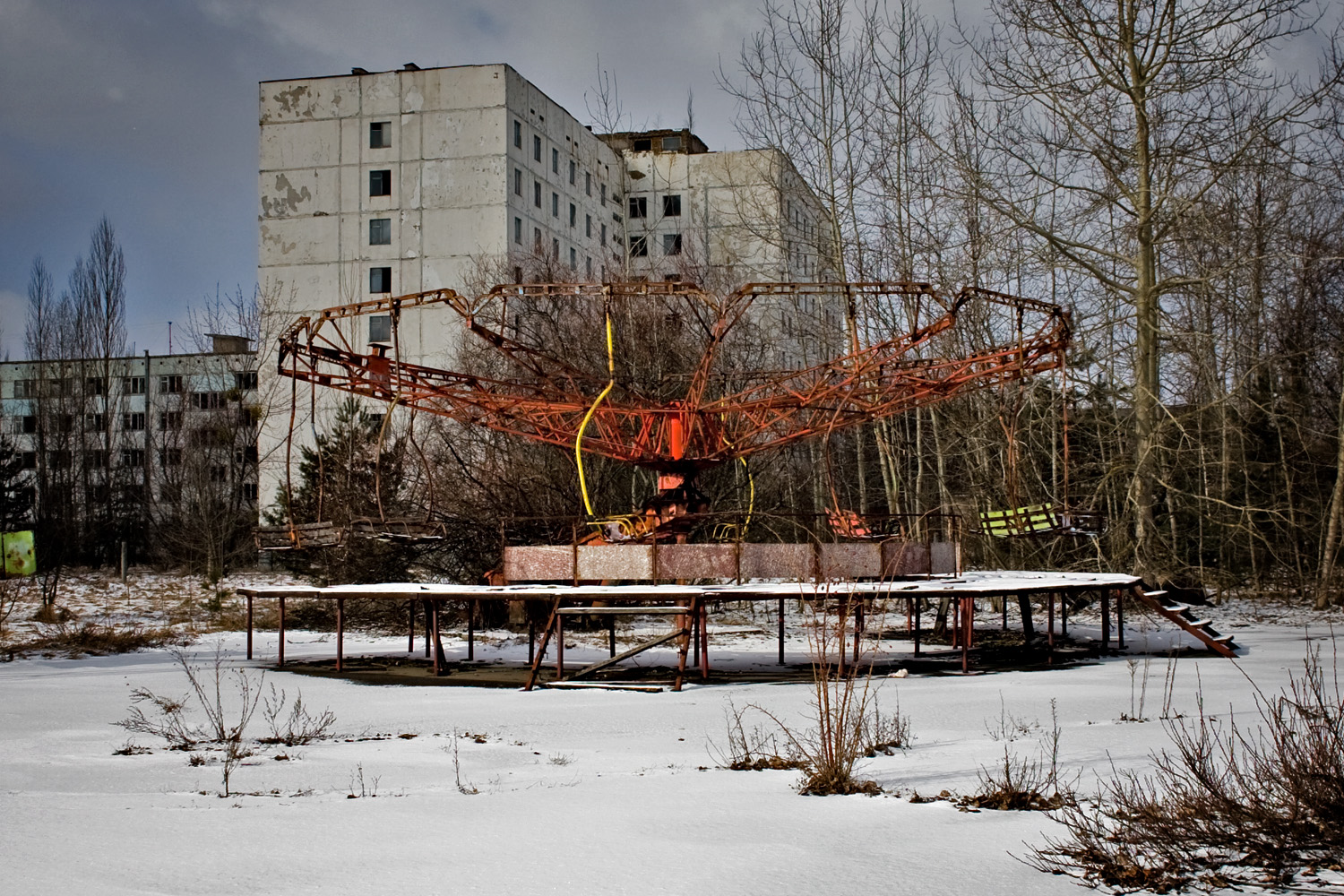

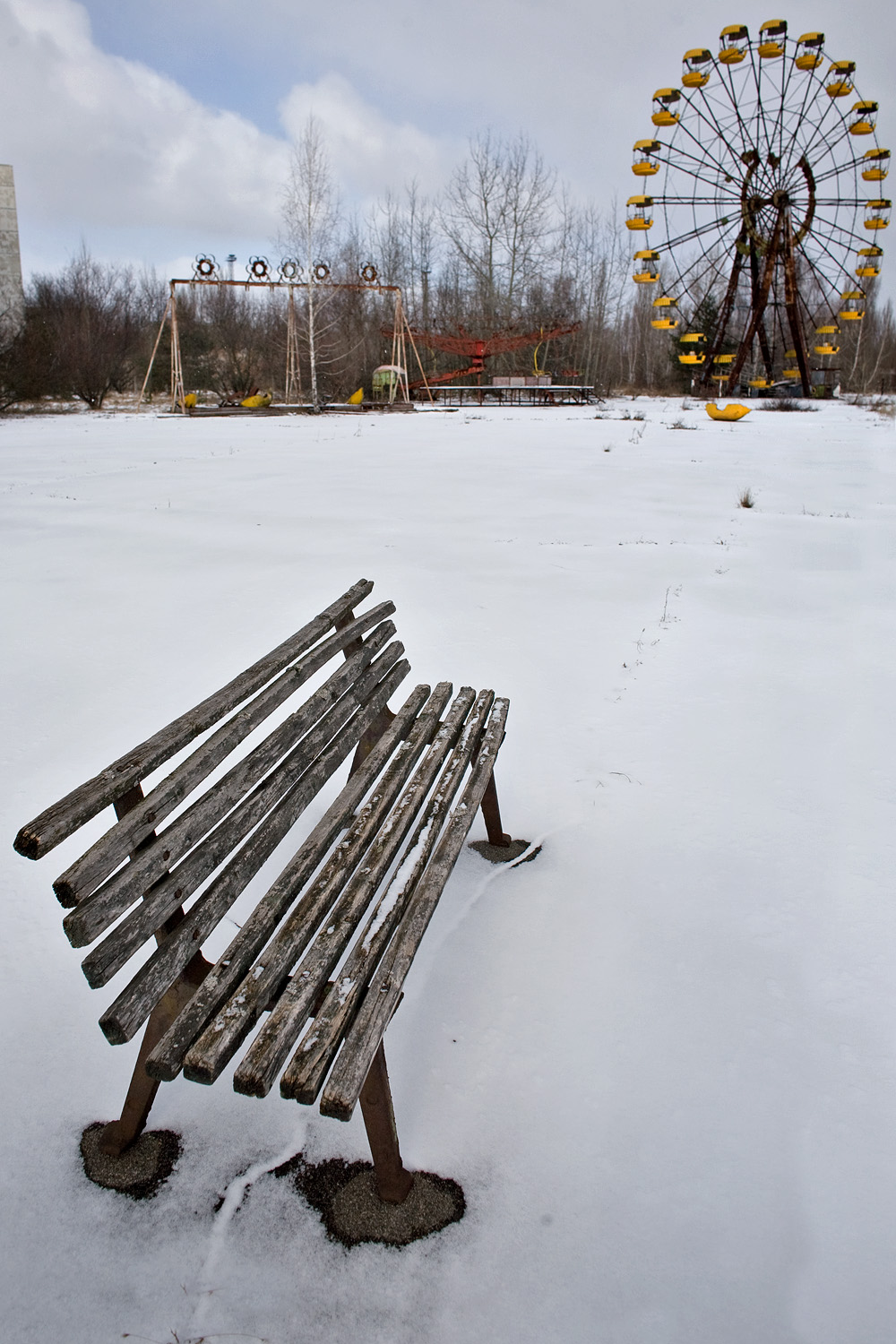
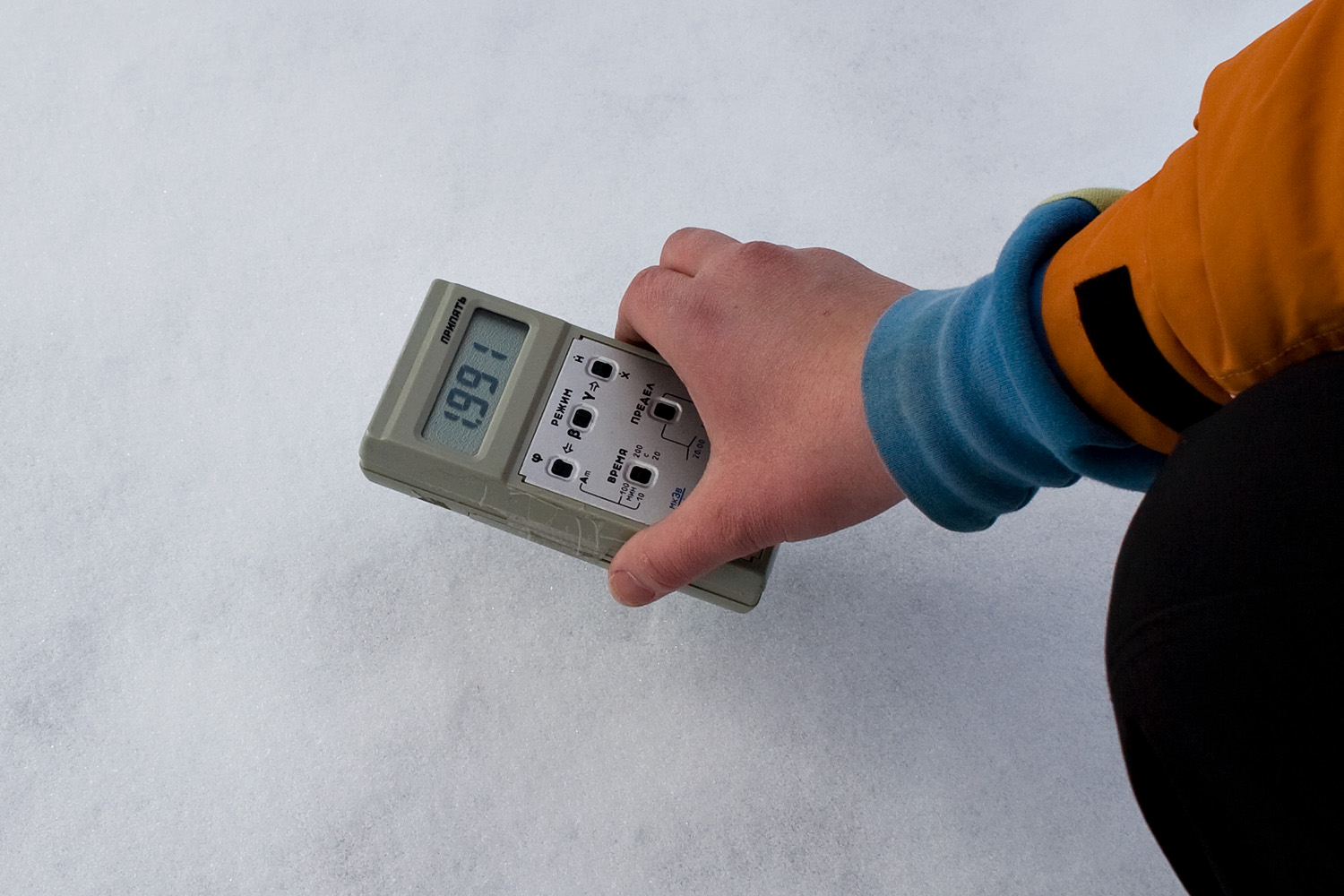

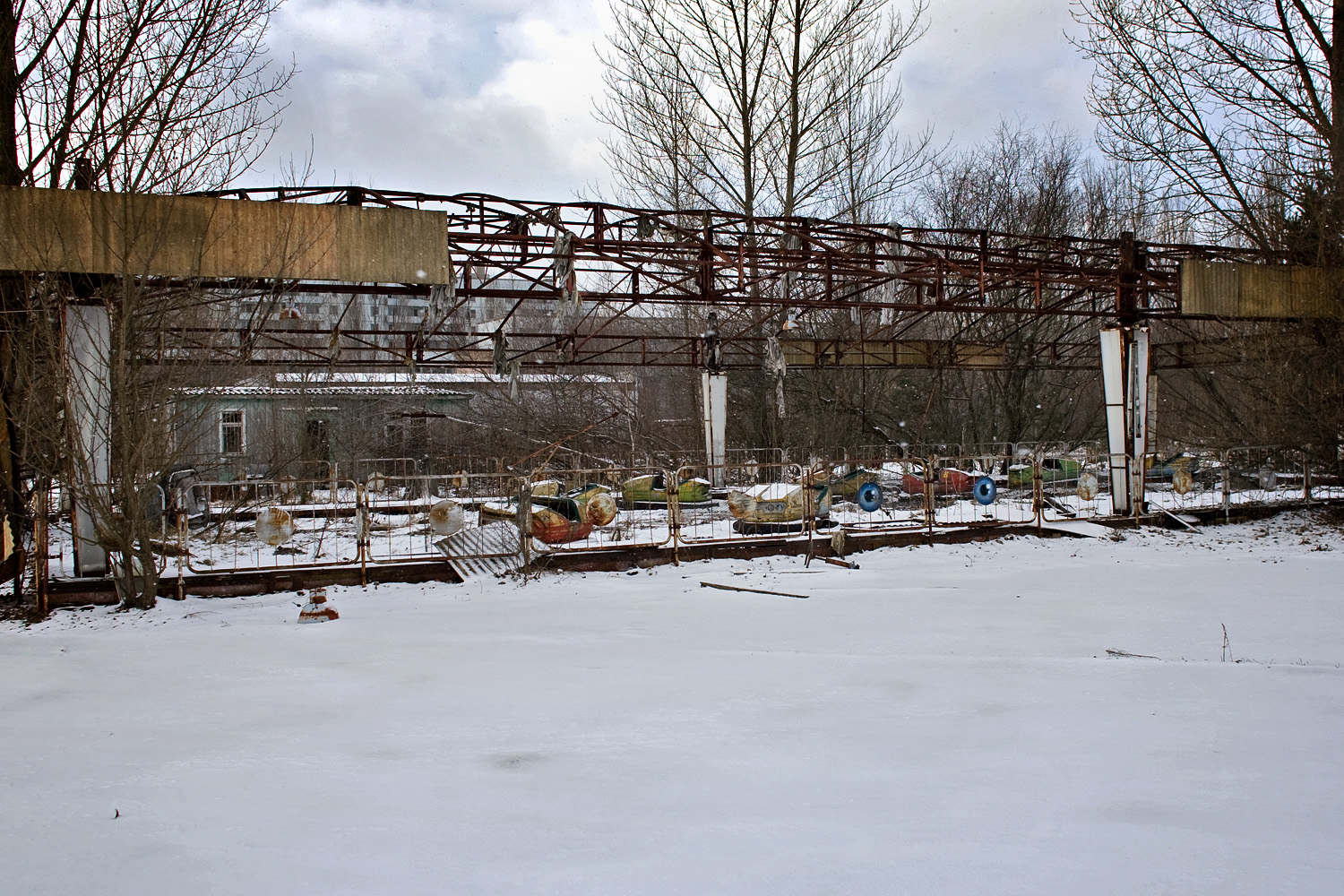
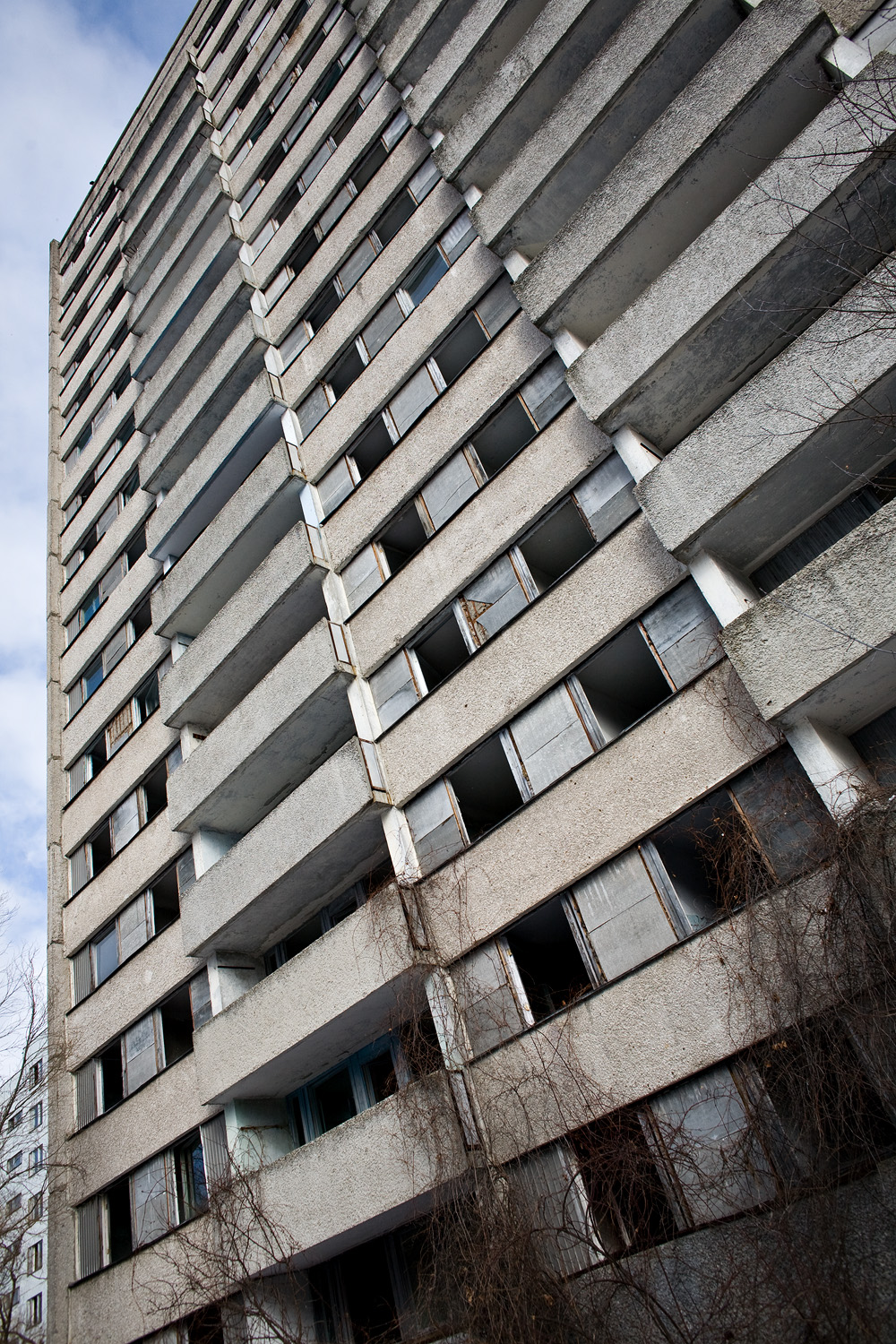



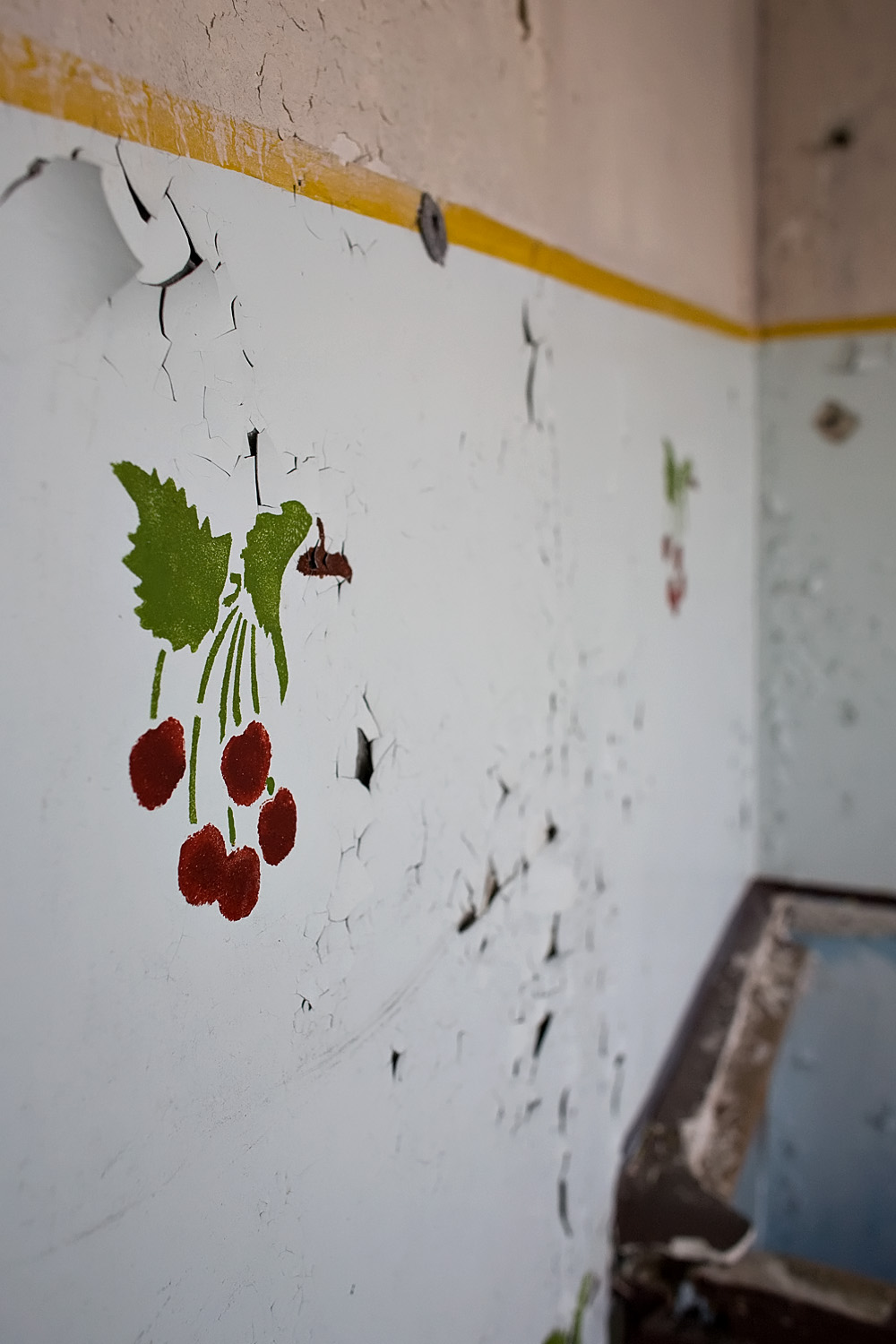



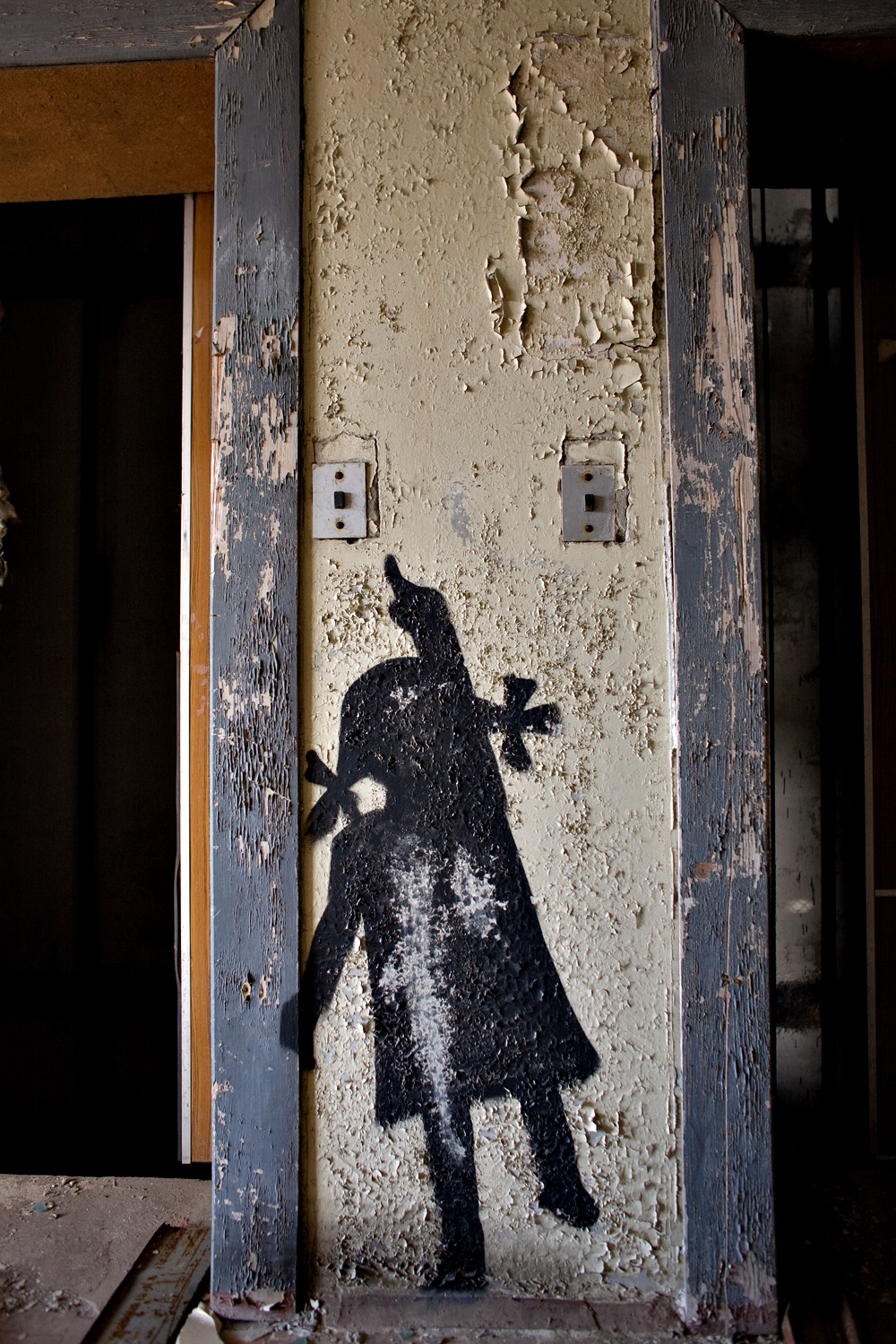



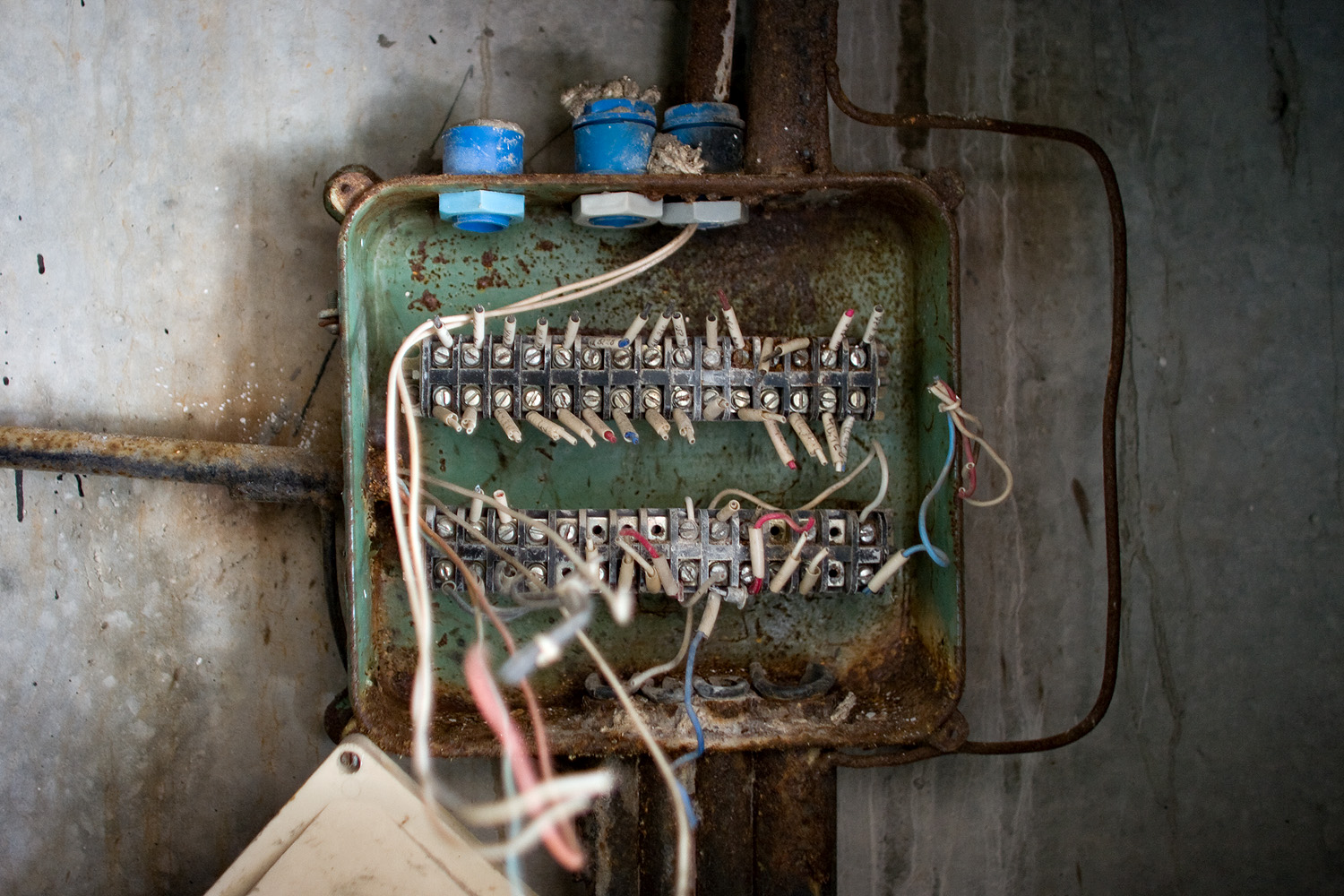

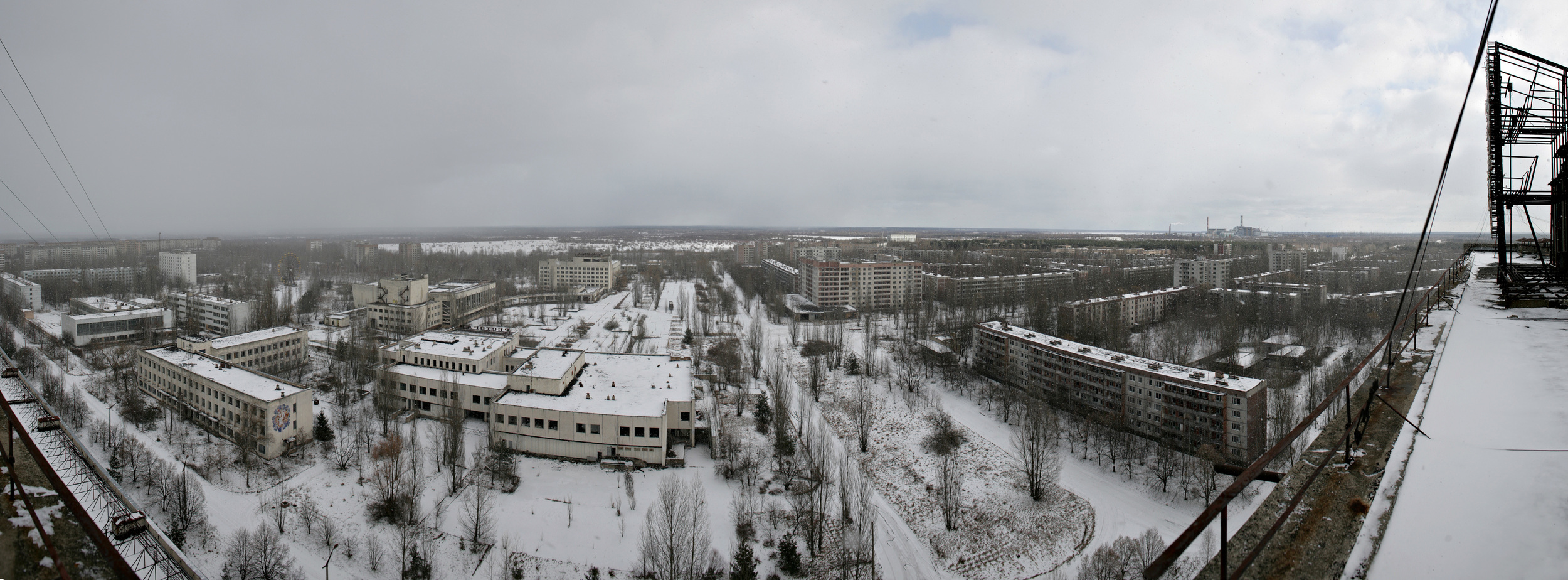




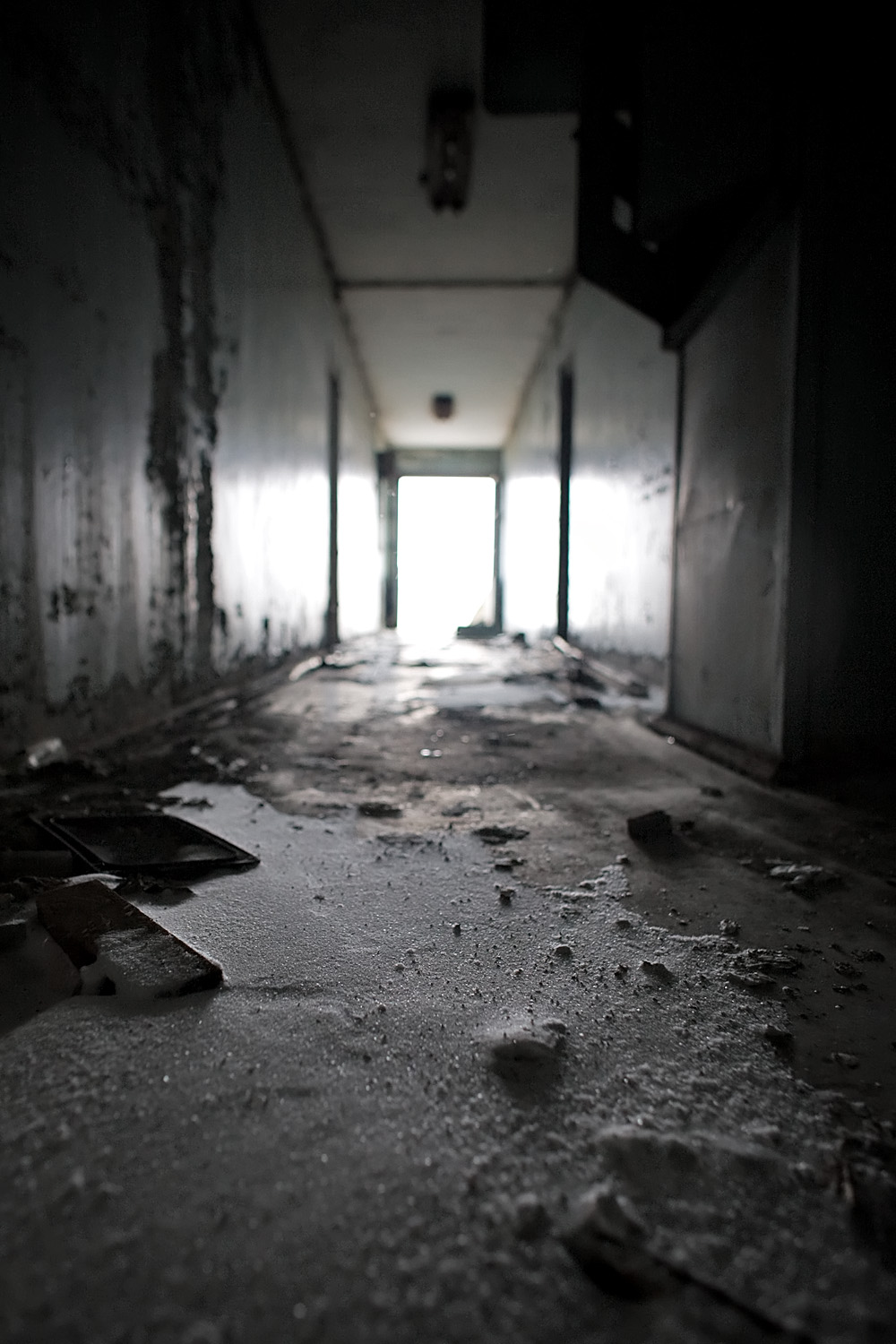
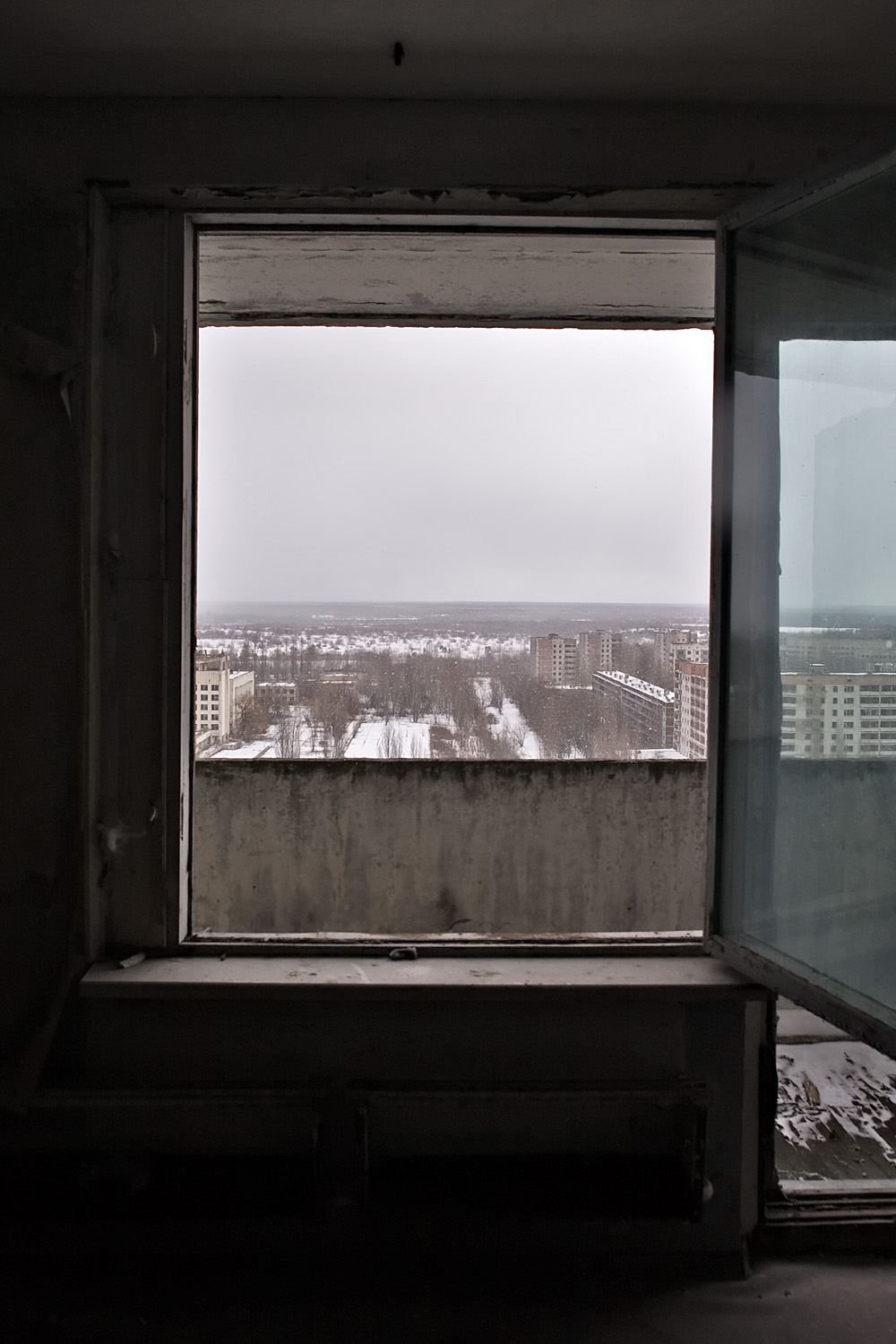


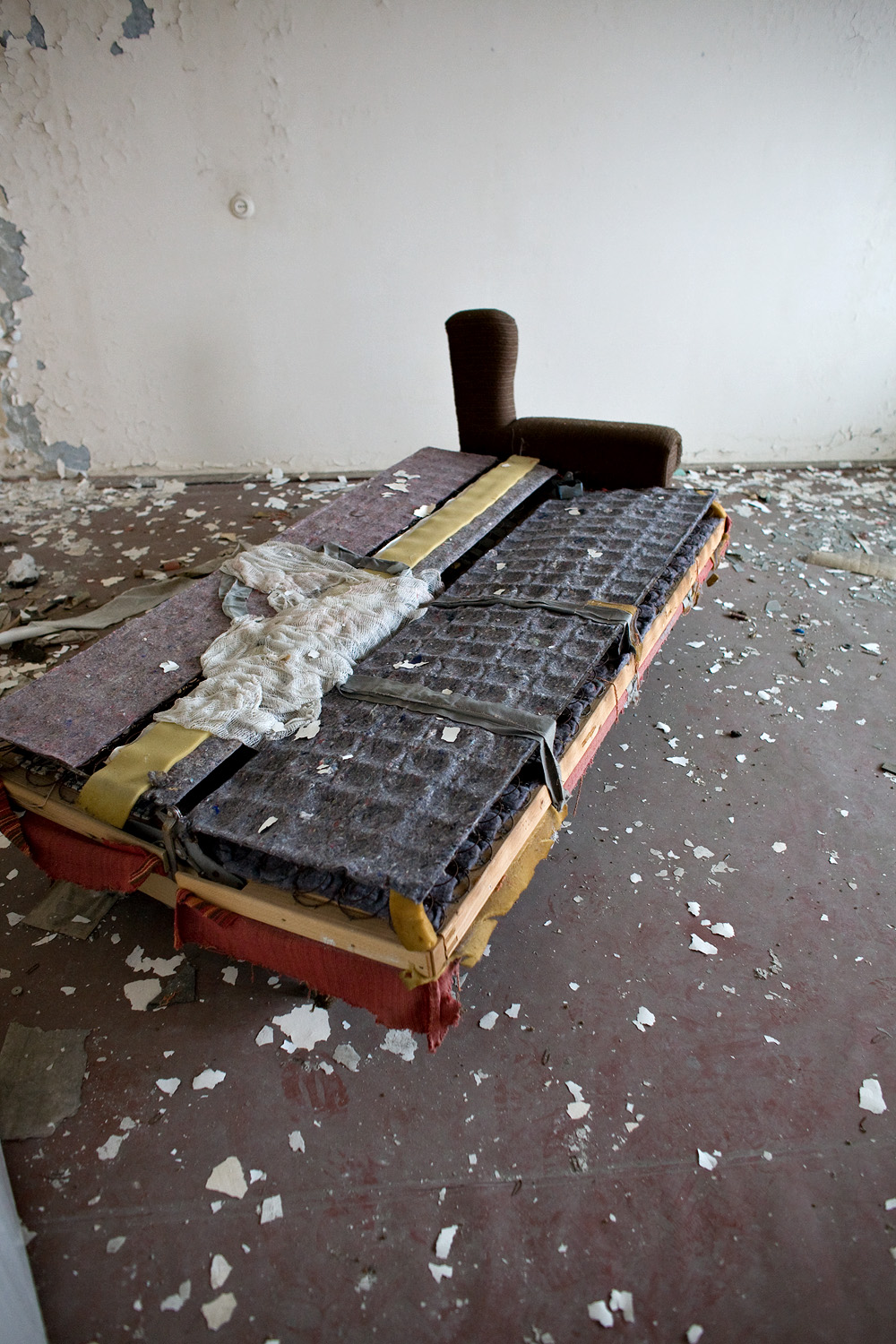










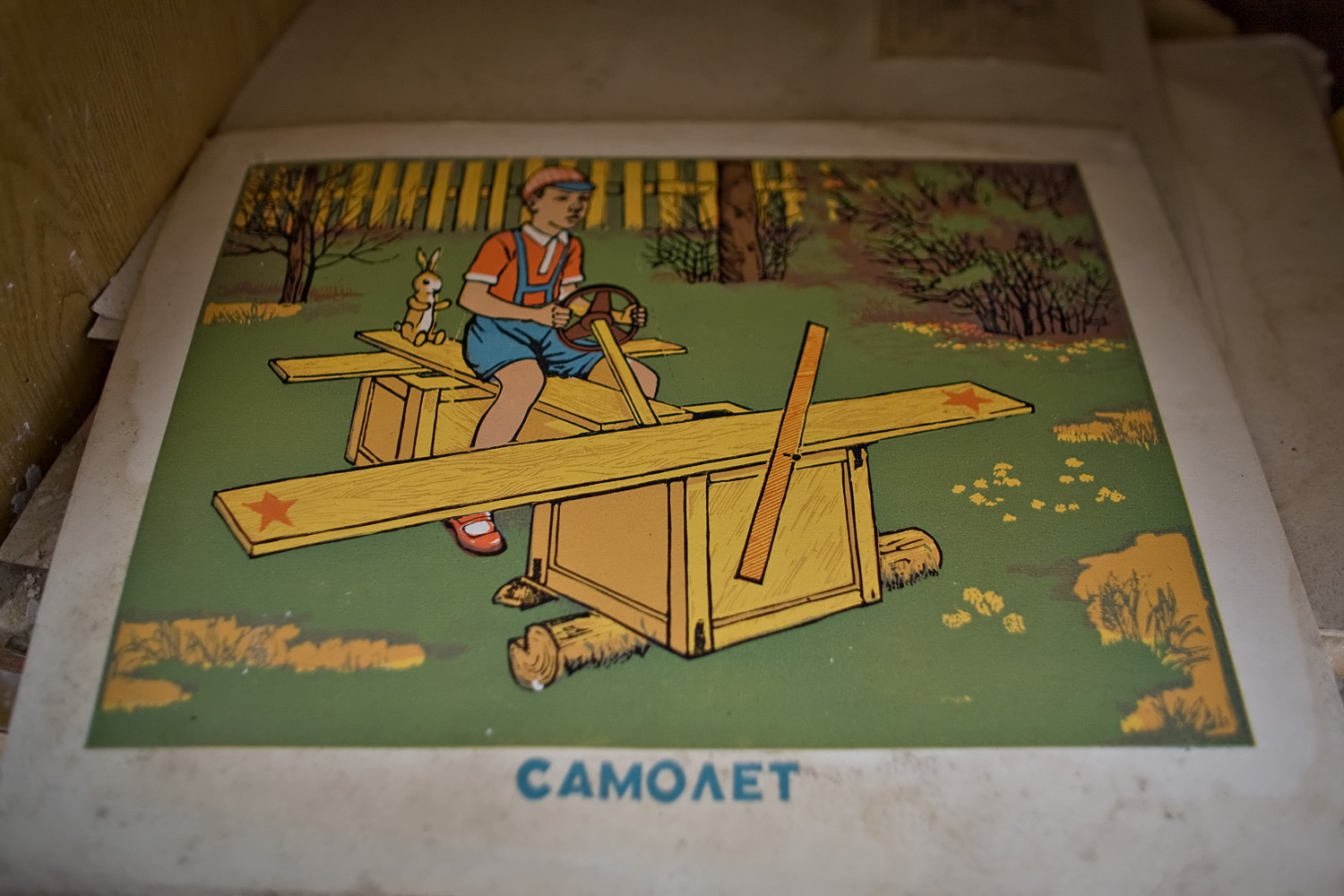
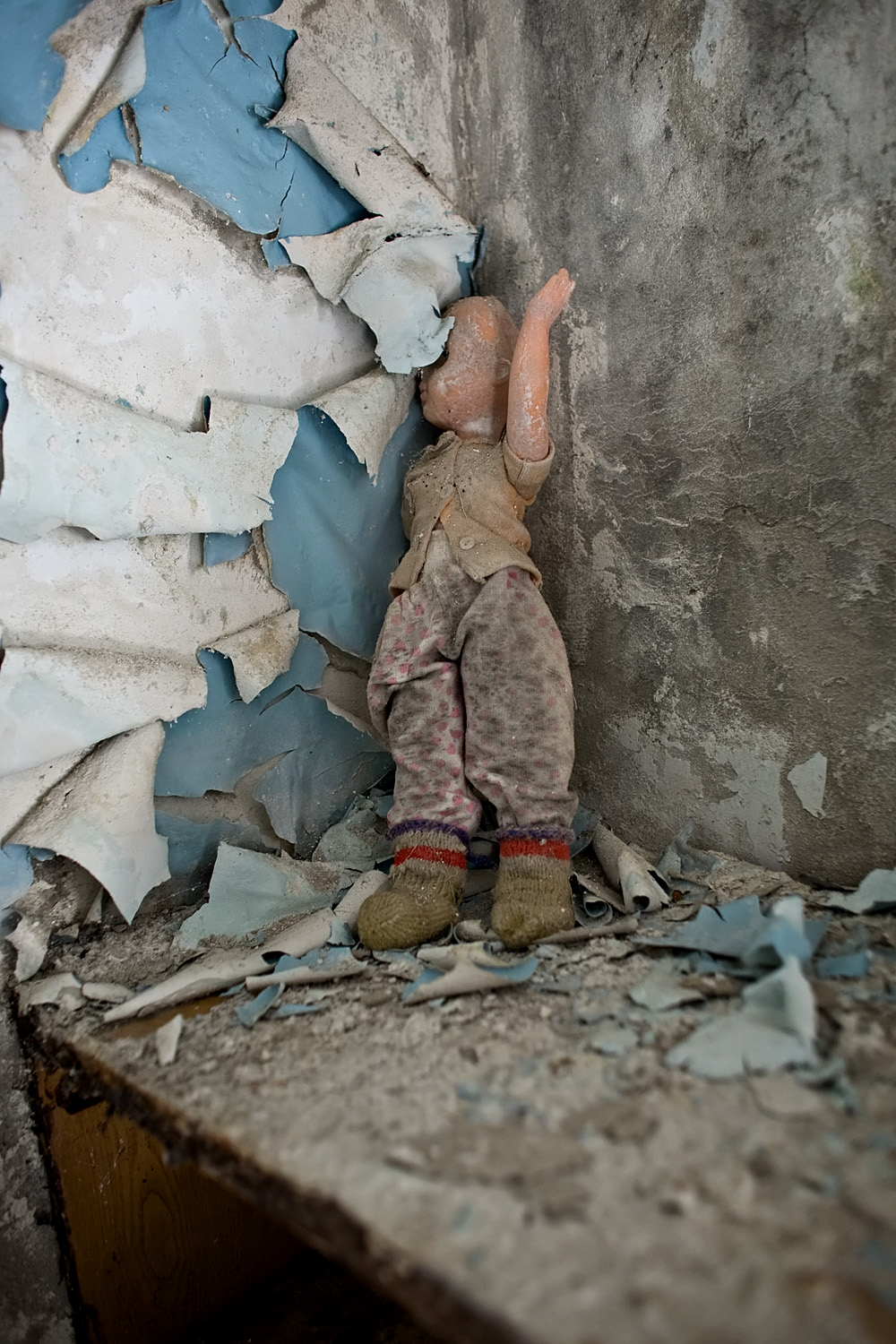
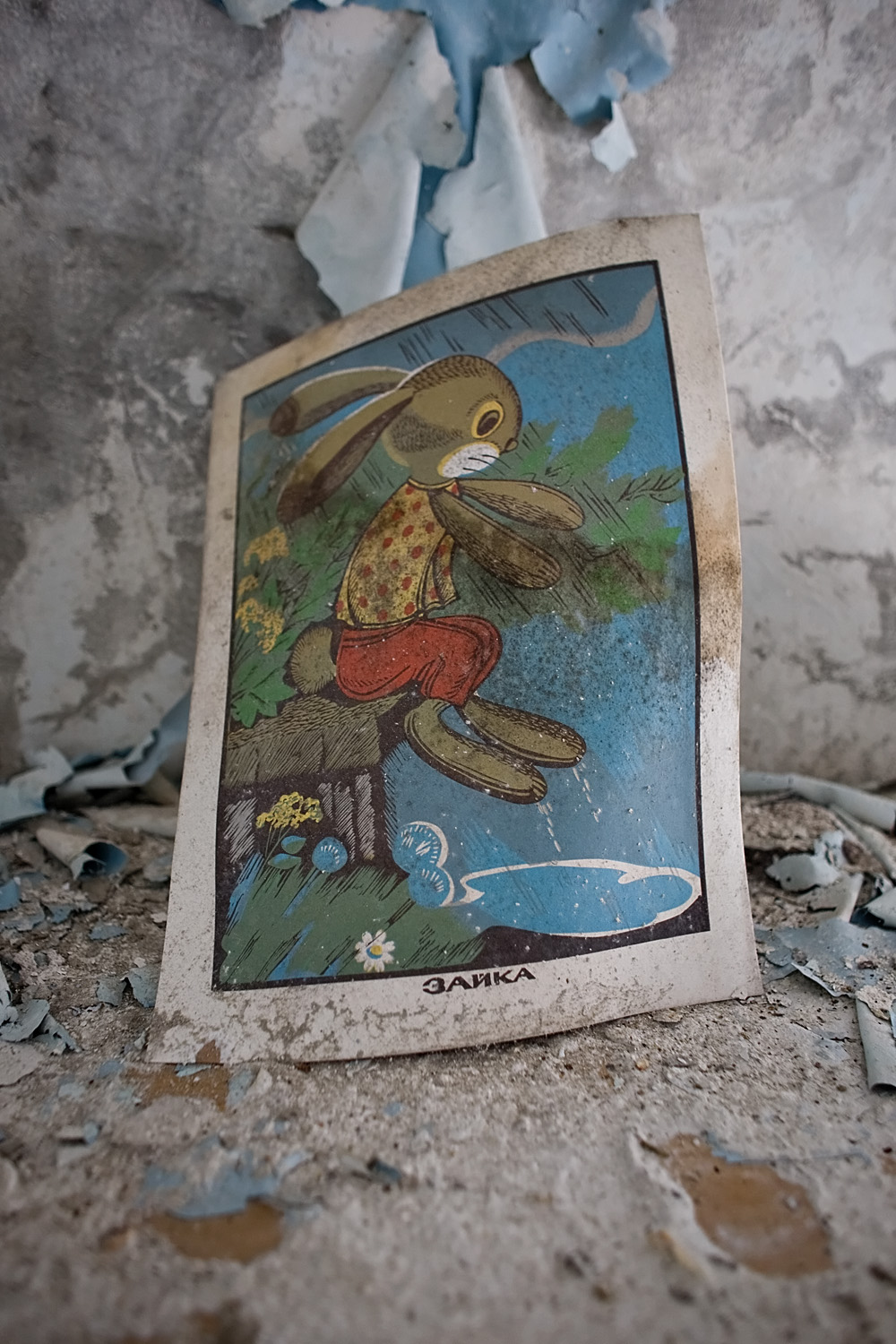
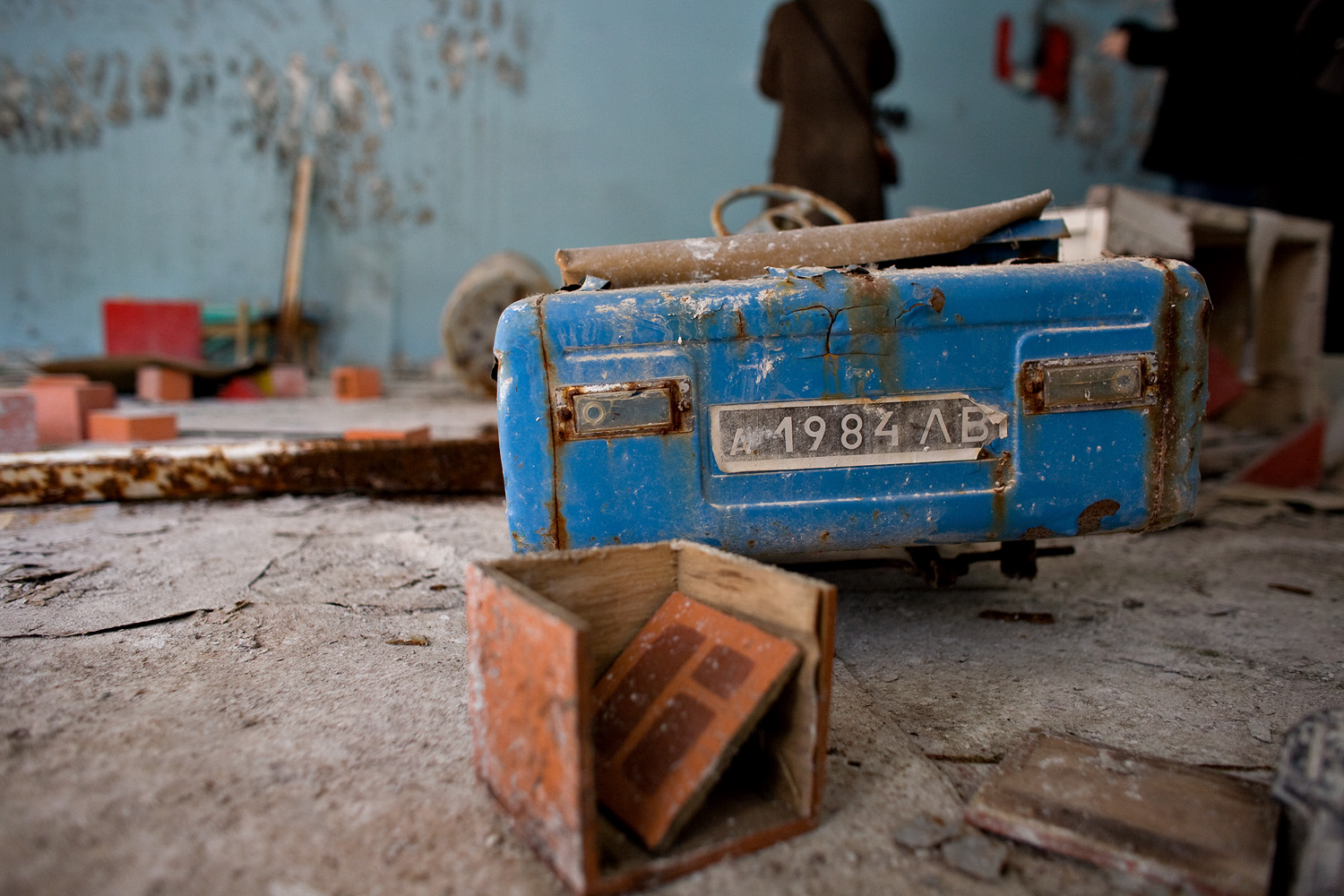
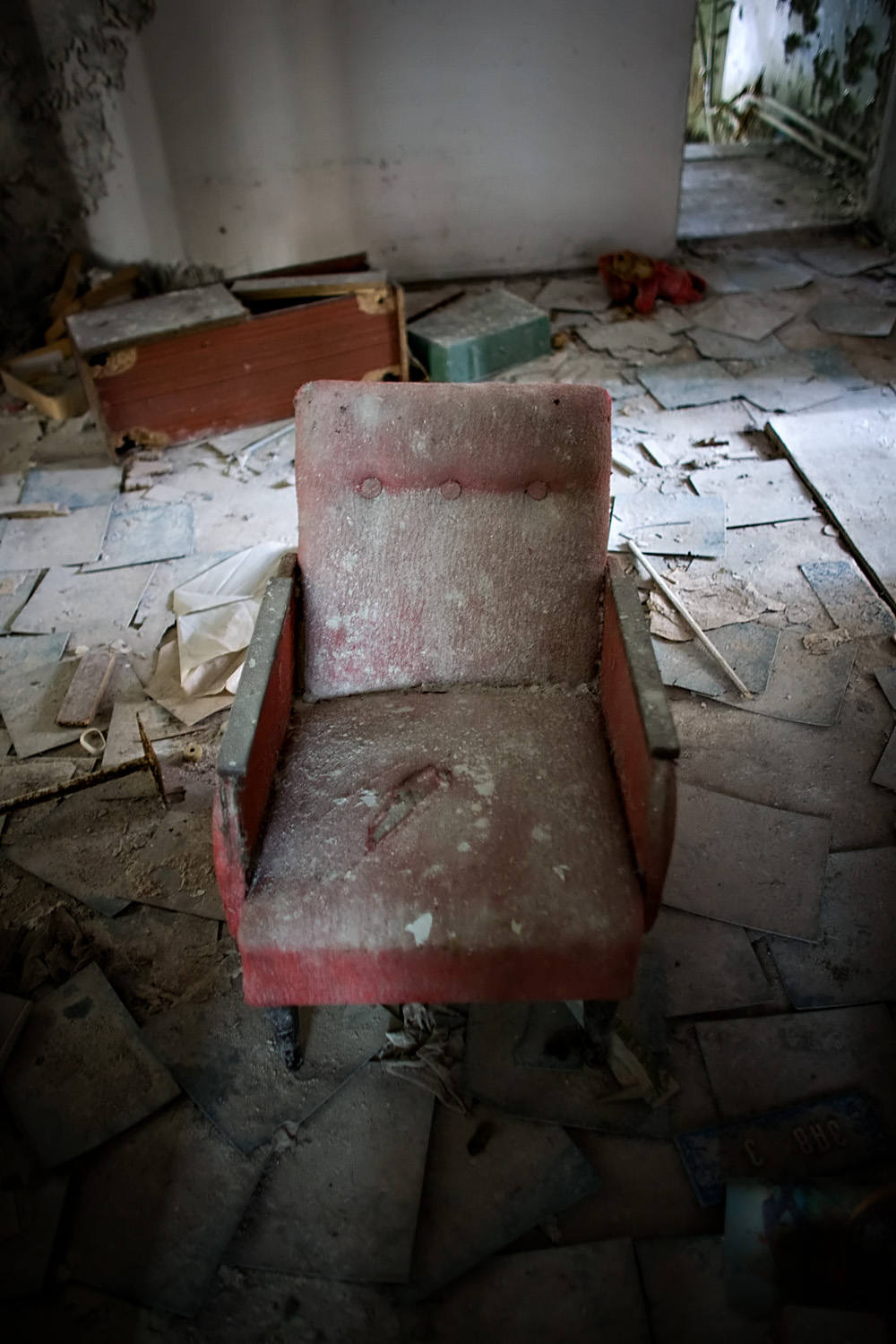
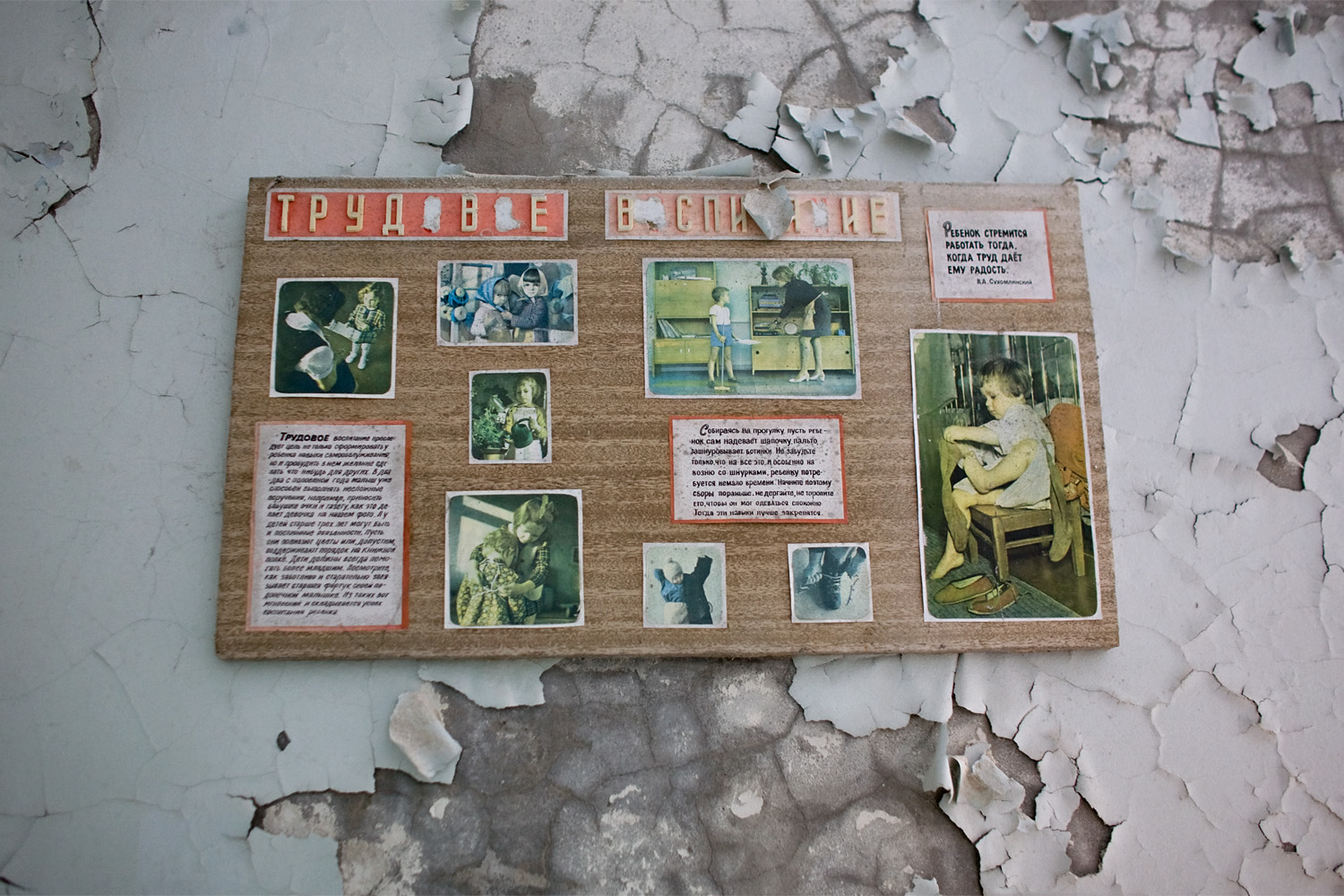
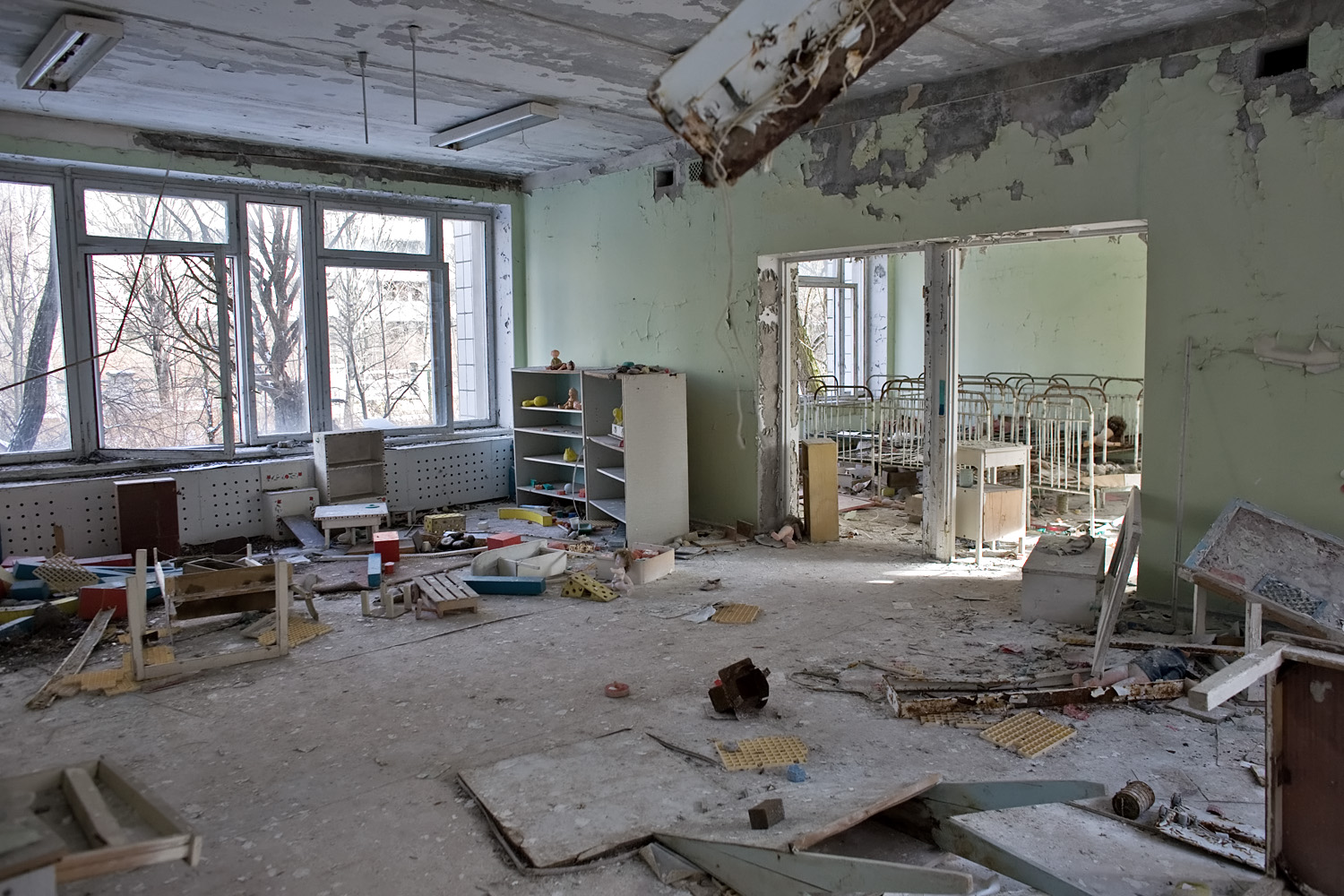



















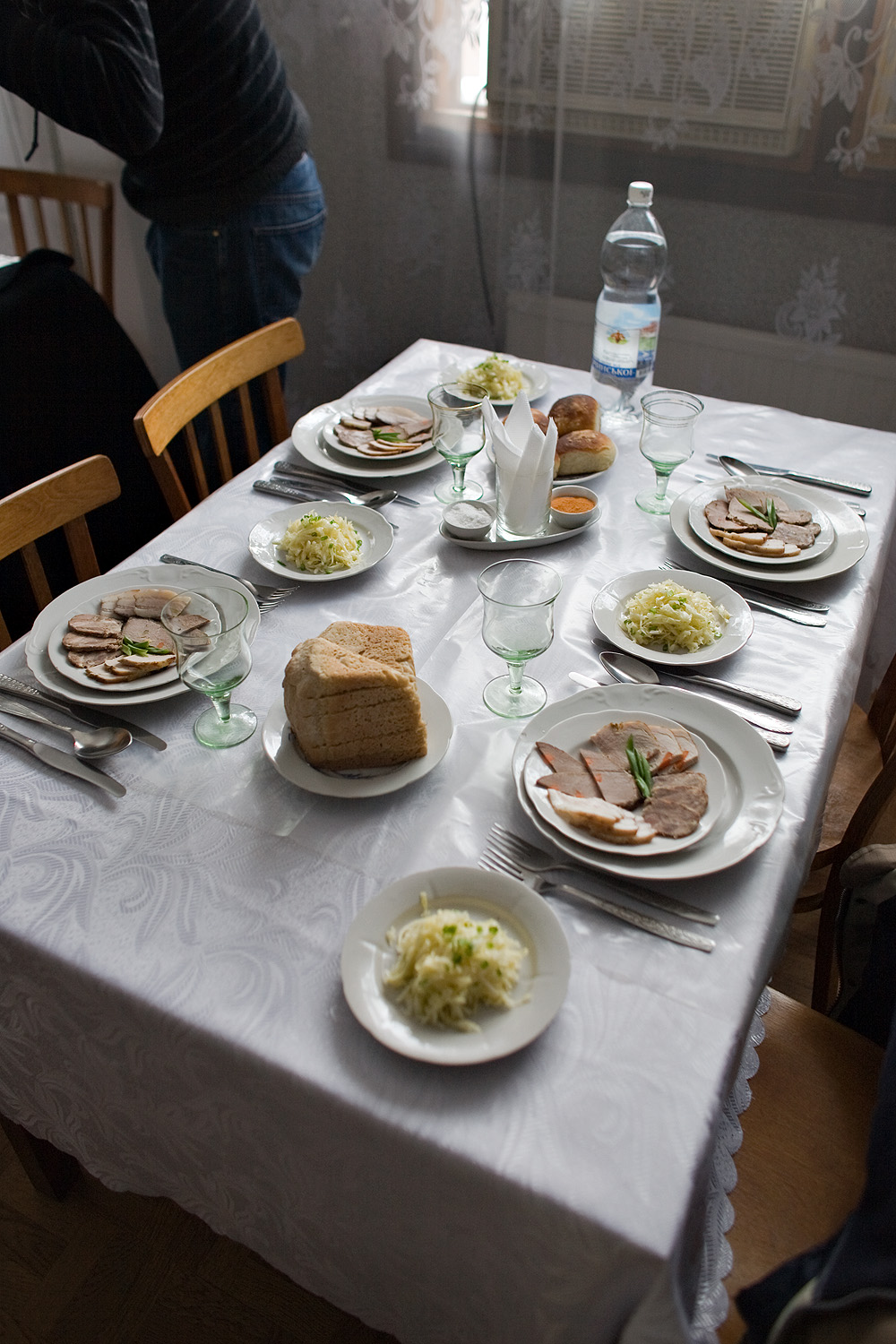


Our Dutch travelling companions asked the driver to stop, so we could photograph one of the road signs indicating Chernobyl.

The first checkpoint into the Chernobyl Exclusion area. We had to show our passports here to gain access. This is where we were checked for radiation for the second time to be allowed to leave on our way back.

The road to Chernobyl. The nuclear reactor, contrary to what I believed, is not in Chernobyl, which is a smaller town (with a population of 16,000 at the time of the accident), but which gives the region its name.

In the town of Chernobyl, at the offices of the Chornobylinterinform Agency, being shown the map of the Chernobyl exclusion zone, by our official state guide, Denis.

Map of the distribution of the Cesium-137 contamination as of 1999, where it can be seen that the wind and terrain were the primary factors in the distribution of the contamination.

Leaving for the visit, still in the town of Chernobyl, a cold day awaited us (around -10° C, or 14° F).

Signs of life. Official personnel in Chernobyl, which hosts a population of 50, on a fortnightly rotation. Indoor radiation levels in town are normal.

Leaving Chernobyl, a quick visit to the monument built by firemen to honor the memory of their fallen colleagues who died protecting the world.

Getting to the nuclear plant area, we can see the unfinished reactors five and six and the unfinished cooling towers (reactors one through four were cooled using an external open circuit pond).

On the roadside by the cooling channel, from where the cooling tower can be seen. Radiation here is about seven times normal background radiation.

Just by moving the counter a few meters, radiation has gone up to around twelve times normal background. Unfinished reactors five and six can be seen in the background.

Unfinished cooling towers that would serve reactors five and six. From this point on, we weren't allowed to take photos until we reached the site of reactor 4.

Approximately 300 meters from the site of the accident, reactor 4. The memorial to the accident, built in 2006 on the 20th anniversary of the sarcophagus construction.

The guide's geiger counter, showing radiation in mili-rads (this is equivalent to 8.04 µSieverts), or approximately 67 times normal background radiation.

Detail of the concrete sarcophagus and the structure holding the roof which was under the risk of collapse, until the new sarcophagus is built. Behind it, reactor 3 only started operations two months after the accident. A six meter thick concrete wall was built between the reactors to allow personnel to work there.

Plaque in the memorial built in 2006, reading in Russian: "Heroes, professionals, who defended the world from atomic catastrophe. On the 20th anniversary of the construction of the sarcophagus structure."

The checkpoint at the entrance to Pripyat, notice how thick the shelter walls are to protect the guards from the radiation.

Central square in Pripyat, view to the left, with the residence apartment block we visited later and a restaurant in view.

The view from where we came into town, Pripyat's main avenue. The snow made the whole town even more silent.

Store #1 - ‹‹ Rainbow ›› - Happy to provide service from 11 to 20 - Lunch from 14 to 15 - Saturday from 9 to 17 - Lunch from 13 to 14

A tour bus arrived after us for a visit, some people were wearing masks and goggles, although our guide said they weren't necessary with snow covering the ground.

The Polissa hotel in the central square of Pripyat. Some of the stenciled figures made by a German/Belarusian group illegally in 2005 can be seen on the closest building.

Ferris wheel in the amusement park in central Pripyat, it was to be opened on the May 1st celebrations of 1986. The accident happened five days before.

Ferris wheel control or ticket booth. I'm sure the plush teddy bear was placed there later by someone looking for an emotional photo, but it's interesting to also document the later attempts of using the accident to achieve certain media goals.

In the hours before the evacuation, the amusement park was briefly used to distract the families, although it wasn't officially open yet.

Our official guide measuring the radioactivity of the soil on the amusement park in central Pripyat, showing a level approximately 166 times the normal background radiation, the equivalent of 19.91 µSieverts.

The back of the 16 story residential apartment block building we visited, which the front faces the central square of Pripyat.

Stencilled figure by the elevators made by a German/Belarusian group illegally in 2005 with the alleged help of one of the official guides.

Corridor giving access to the apartments on the last floor, with an identical building on the background.

Reactors of the Chernobyl atomic plant as seen from the top of the building. The working plant is a conventional plant supplying electricity to the area.

Newspaper used as the backing of the wallpaper in one of the apartments. The top article reads "Circus artists get gold medal".

Peeling fake brick wallpaper, showing the newspaper backing. The title of the article reads "Village construction - Where to find carpenters?"

"Pravda" ("Truth") - the official propaganda newspaper of the Soviet Union, of Wednesday, 25th of May 1983. Main headlines: "Africa fights and builds"; "Land owners".

Child's pedal toy car in one of the rooms of the creche/kindergarten. Read more about these on the English Russia blog.

Children's work education board. It teaches that "Children want to work when work brings joy", how to "Getting dressed by themselves", "Helping your siblings/younger children", "Helping your parents with house chores", and "Tying your own shoes".

After leaving Pripyat, back to the town of Chernobyl, the very contaminated abandoned ships on the frozen river harbour.

Radiation reading in mili-rads on the right side of a tank used in the rescue operations after the accident, about 18 times normal background radiation.

Radiation reading in mili-rads on the left side of the same tank, about 155 times normal background radiation, probably due to a cesium-137 spot contamination.

"We remember with pain the people, friends and colleagues, who have departed this life prematurely due to their help in the consequences of the catastrophe."

Back in the Chornobylinterinform Agency offices where we started the visit in the morning, for radiation checks and lunch.

The first part of the wonderful lunch we had in Chernobyl after the visit. All the food is brought from outside the exclusion zone.

Leaving the Chernobyl exclusion zone to return to Kiev, by the same checkpoint we entered. The van was checked for radiation, and we were checked again on a more complex detector.